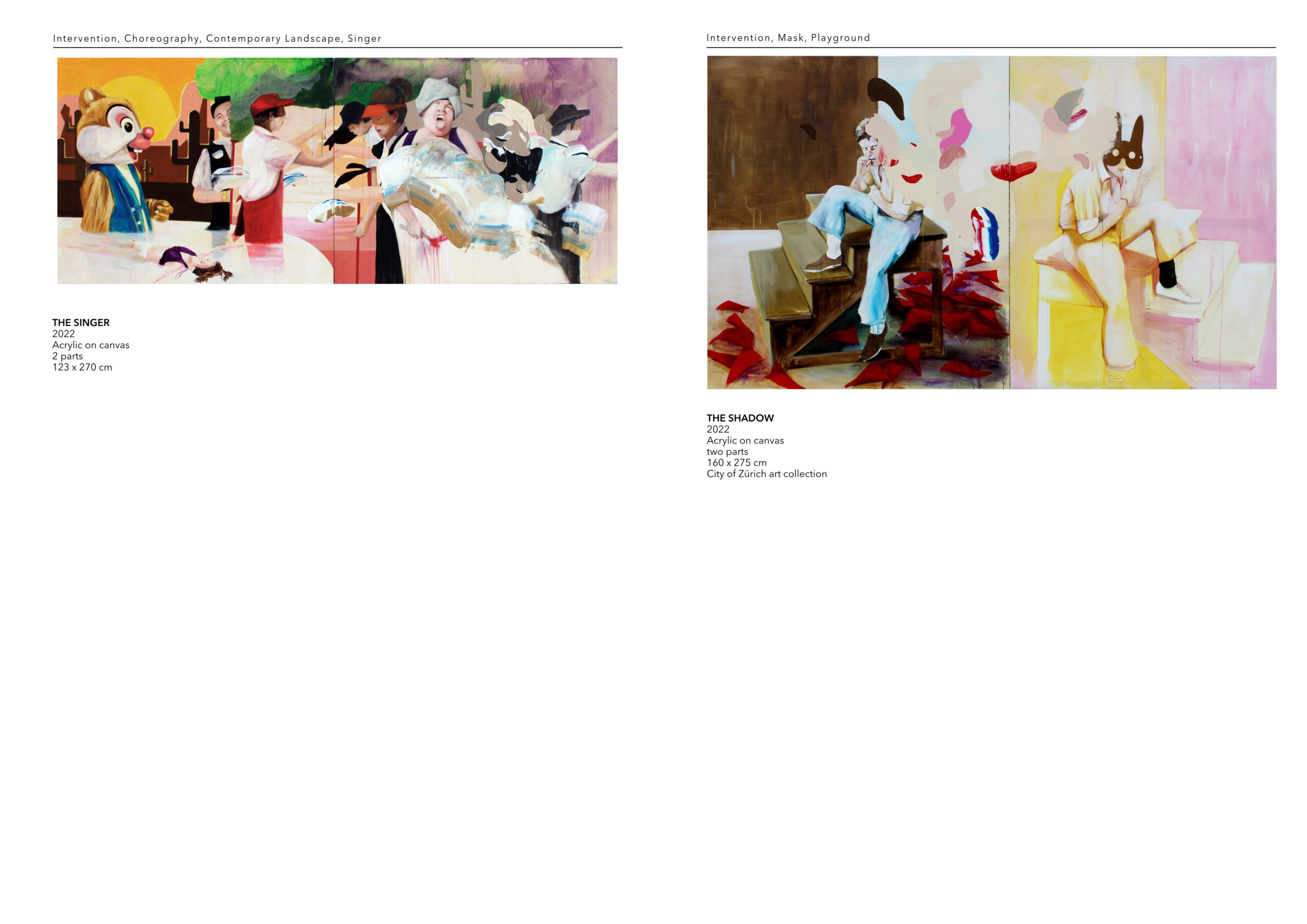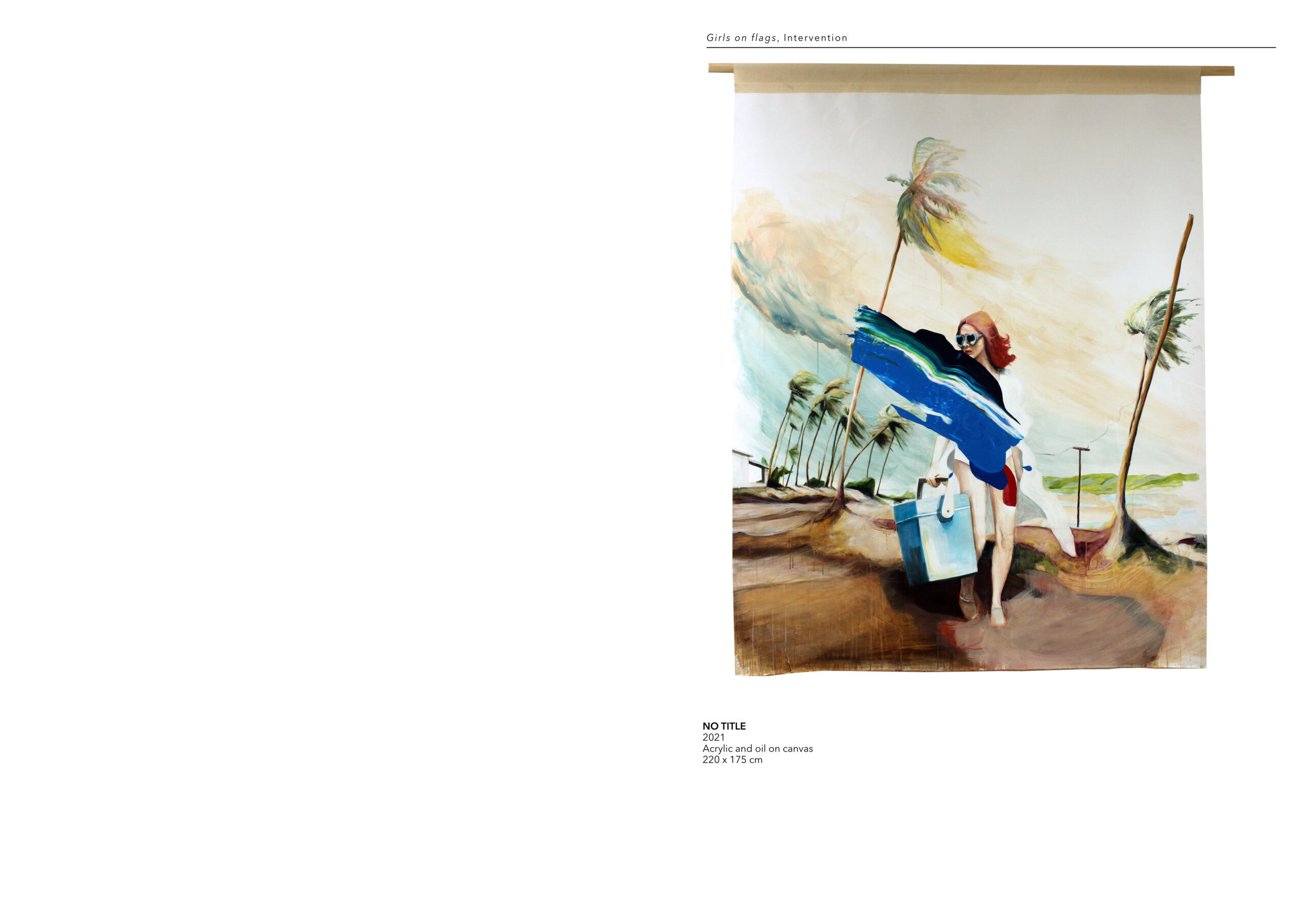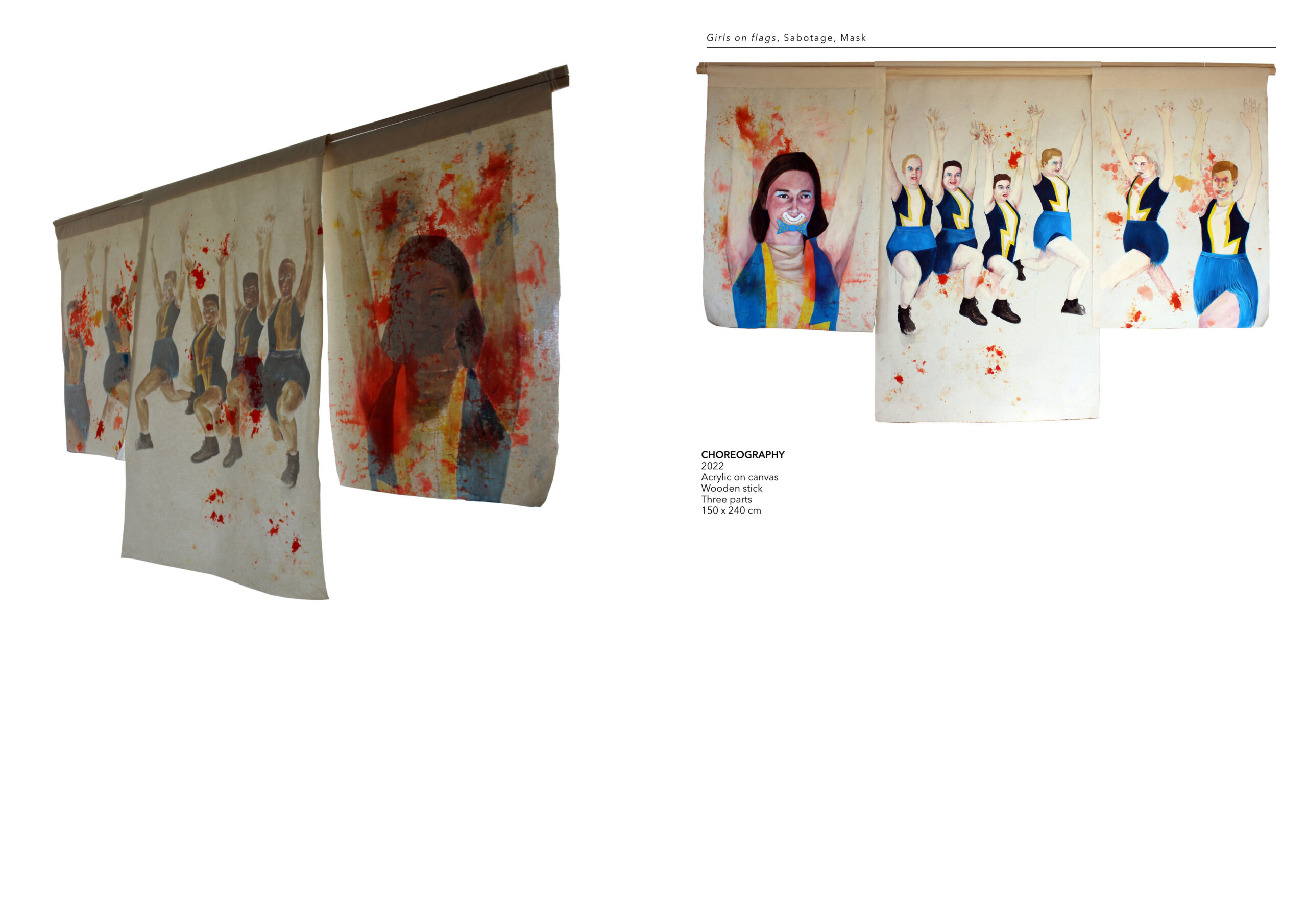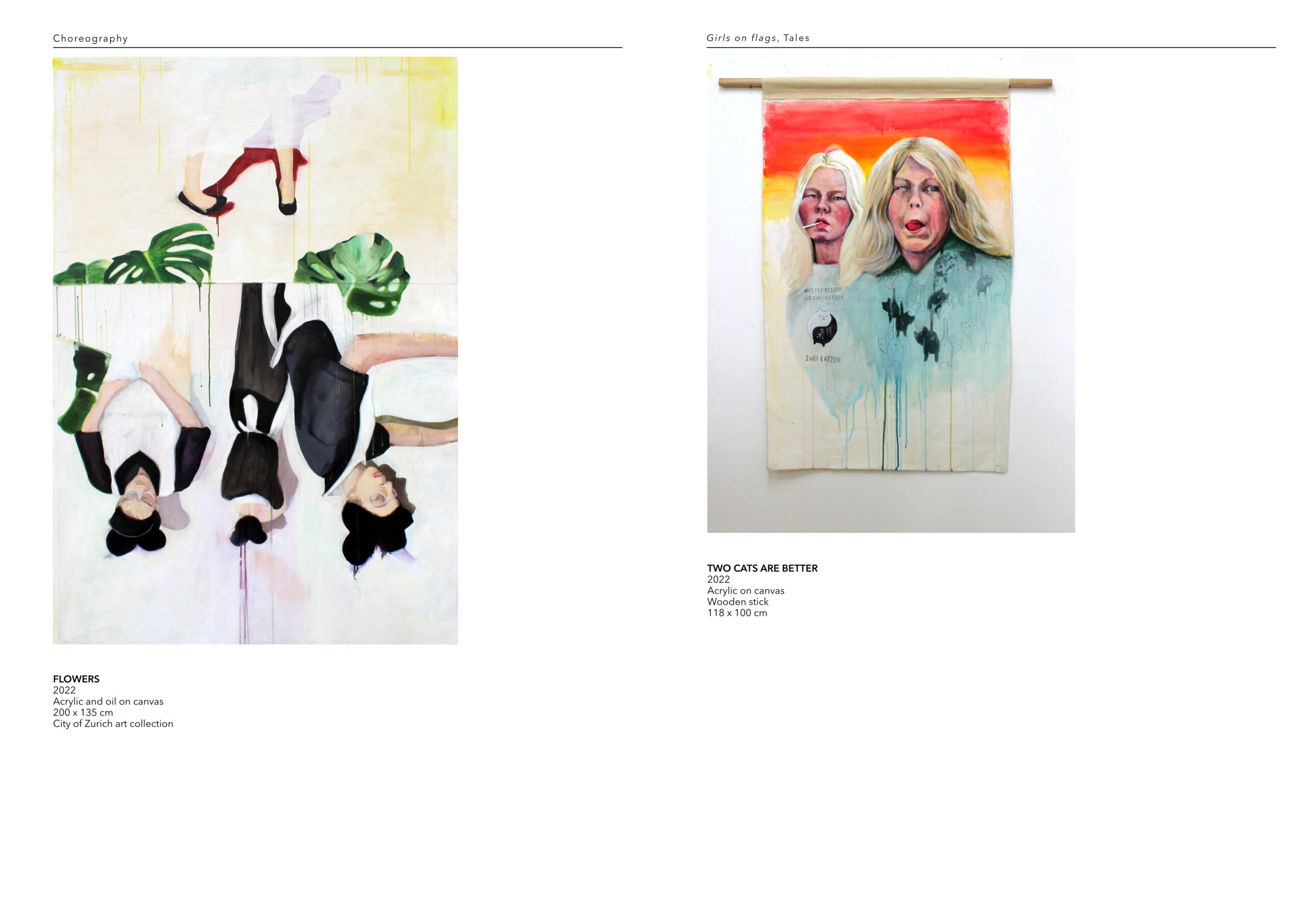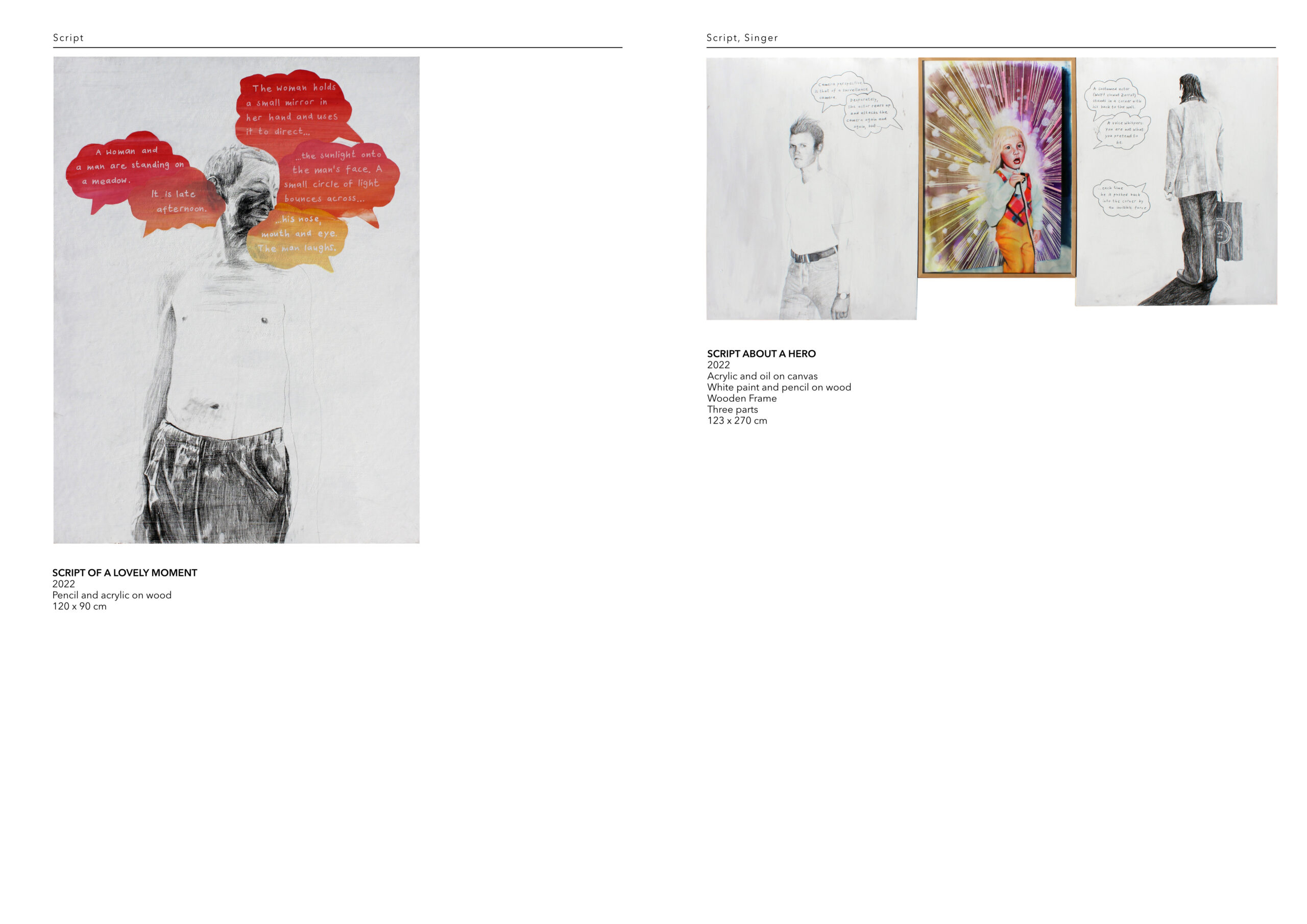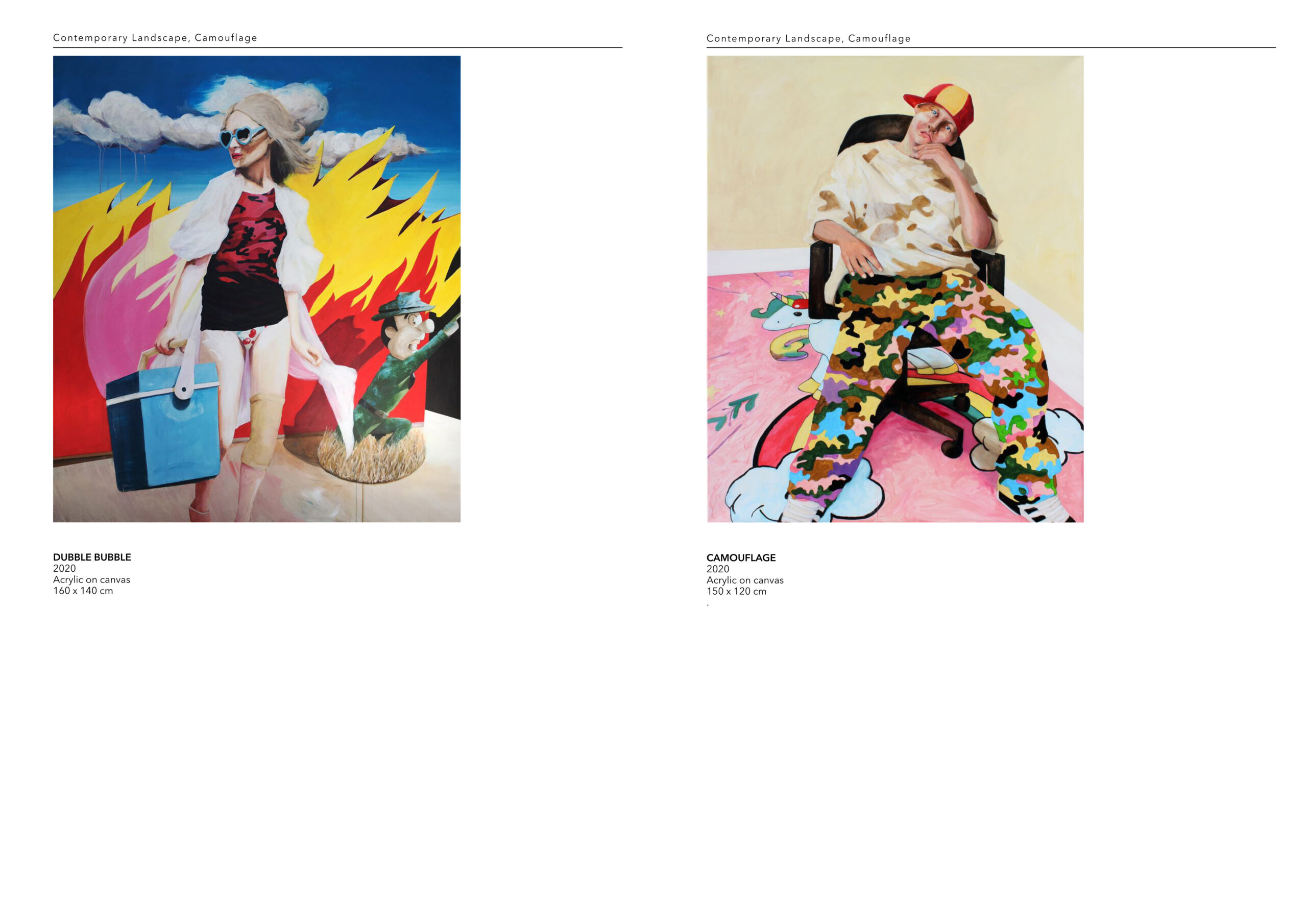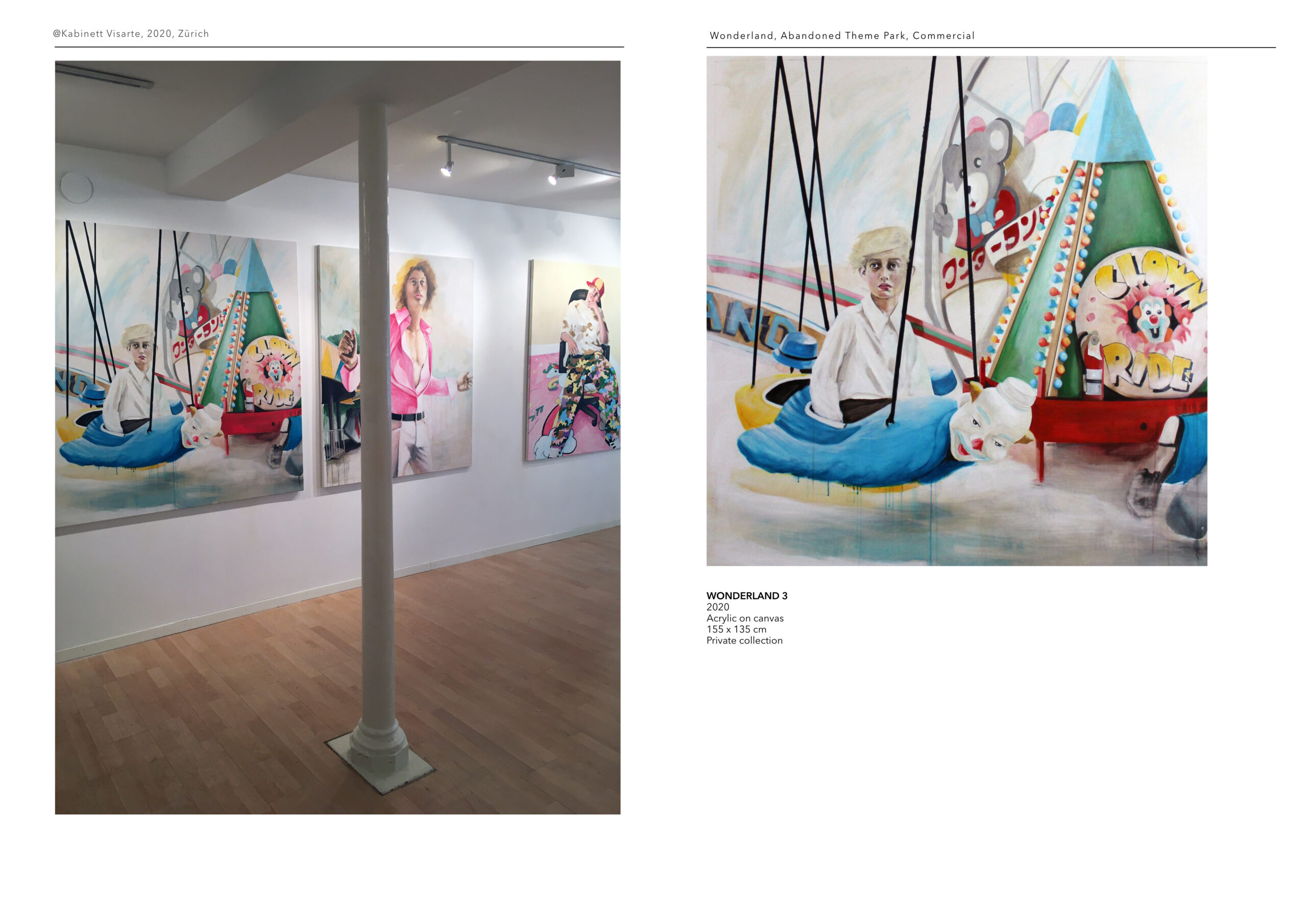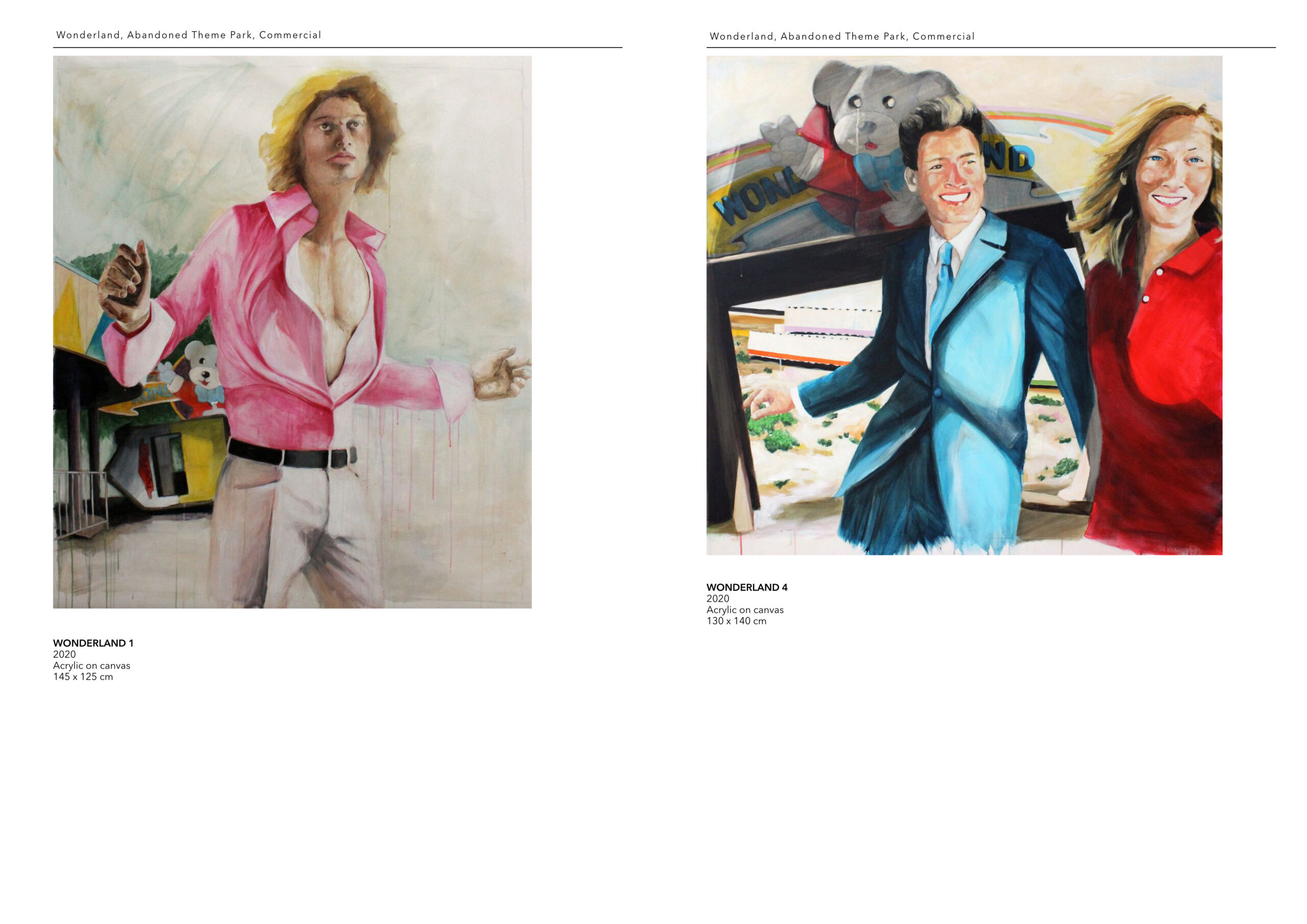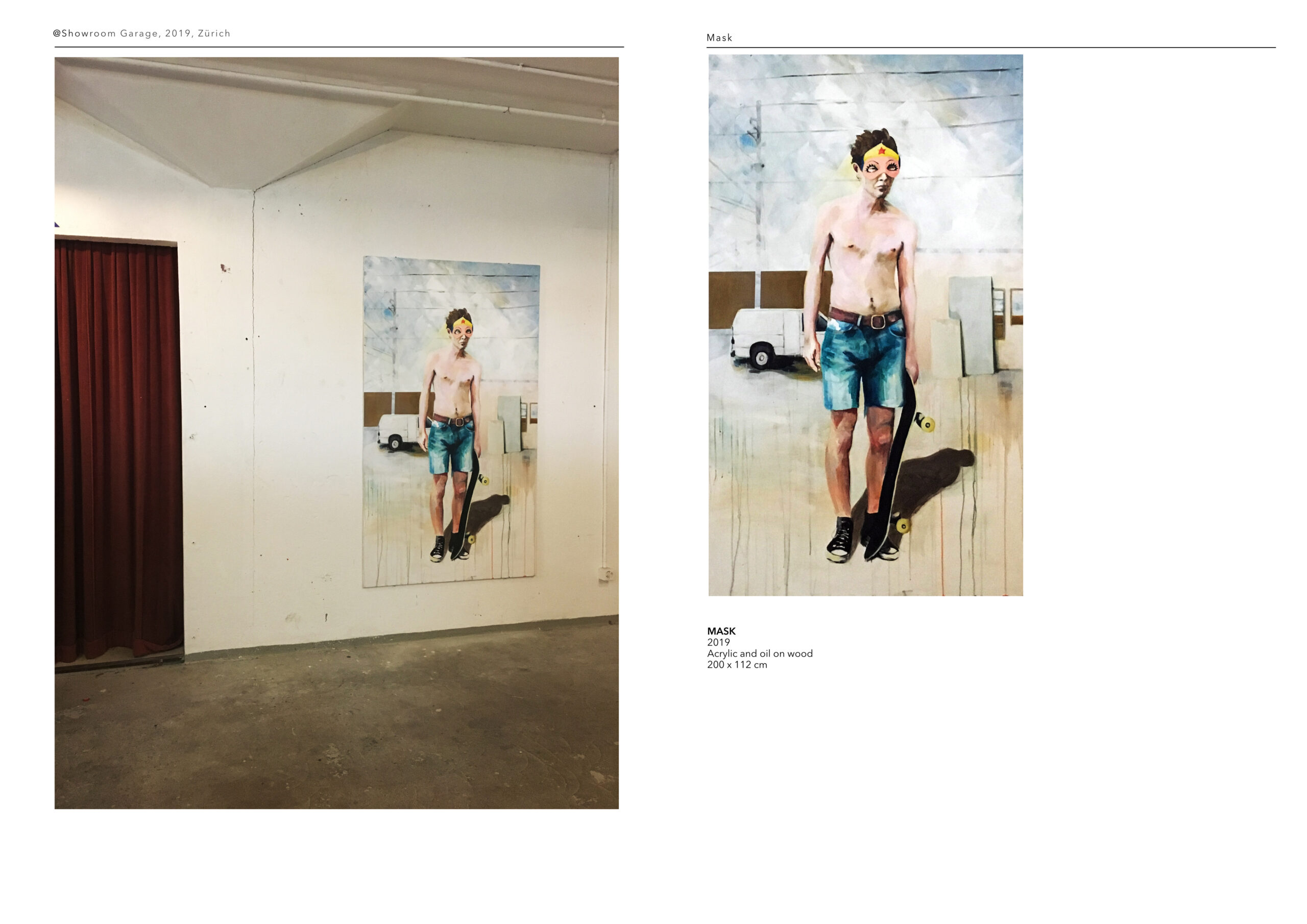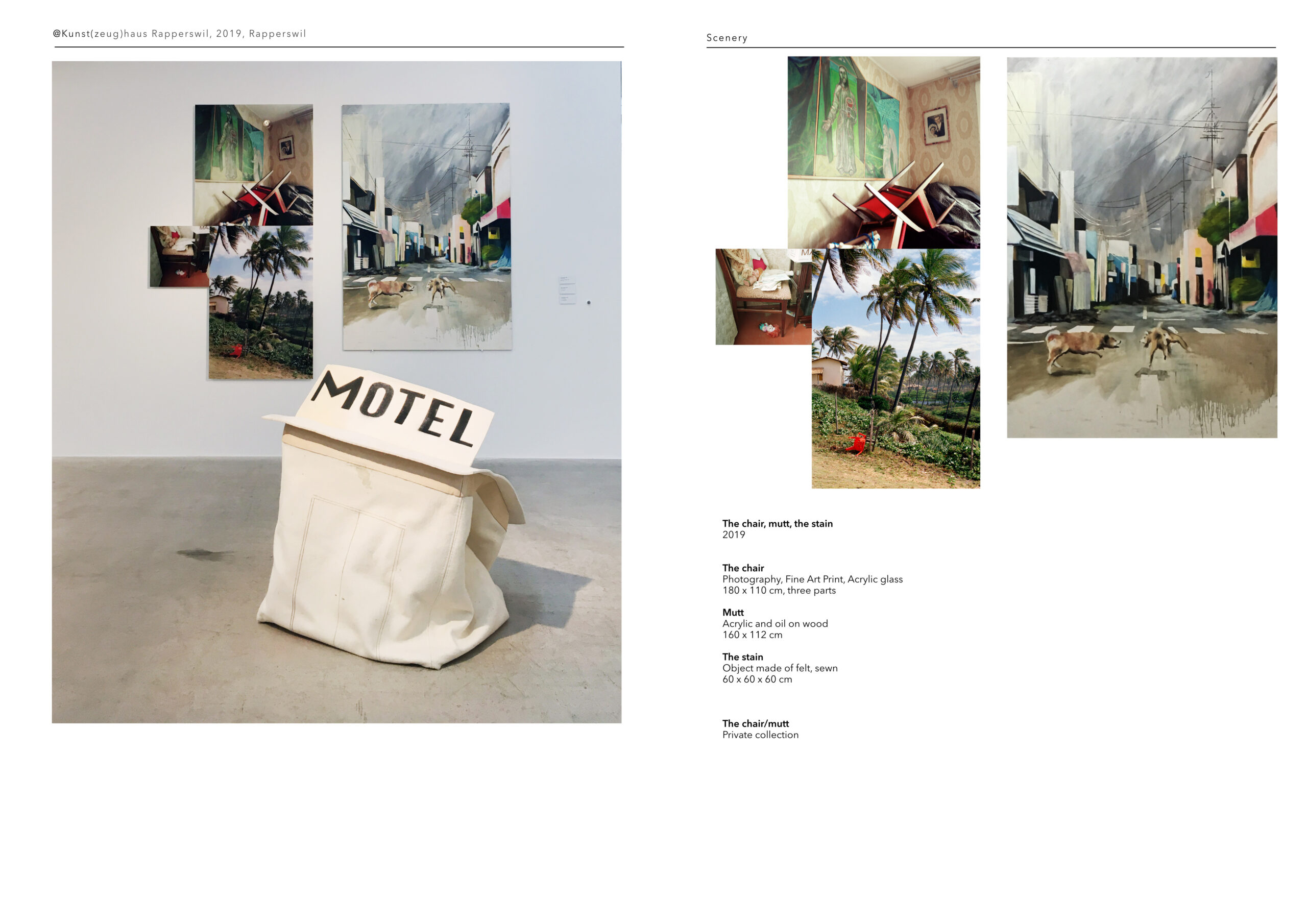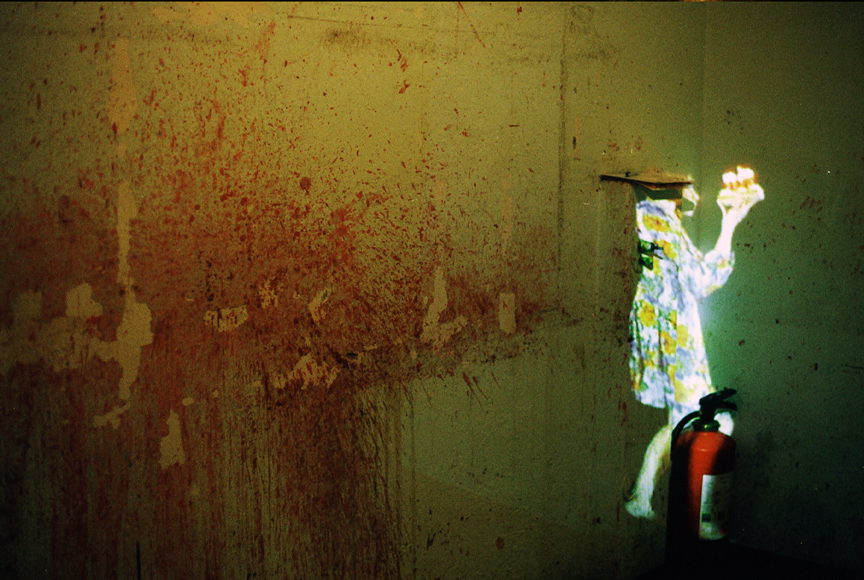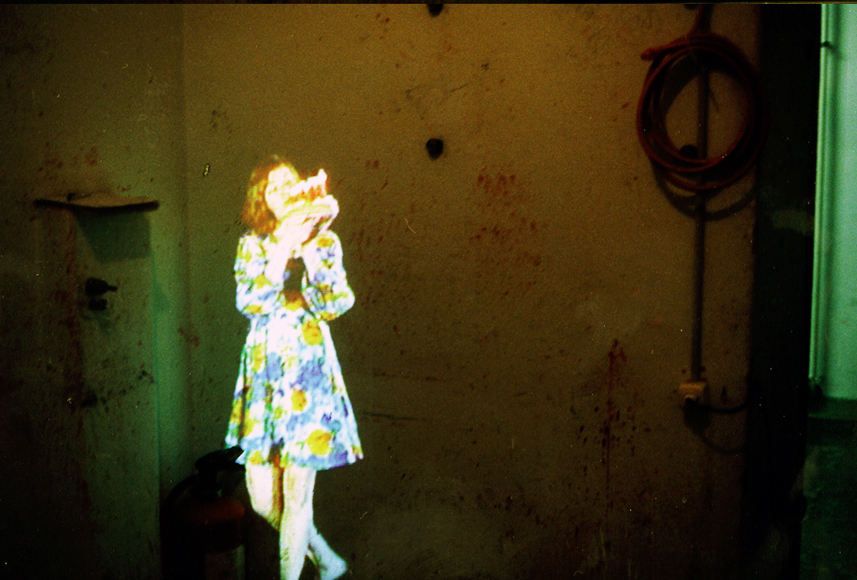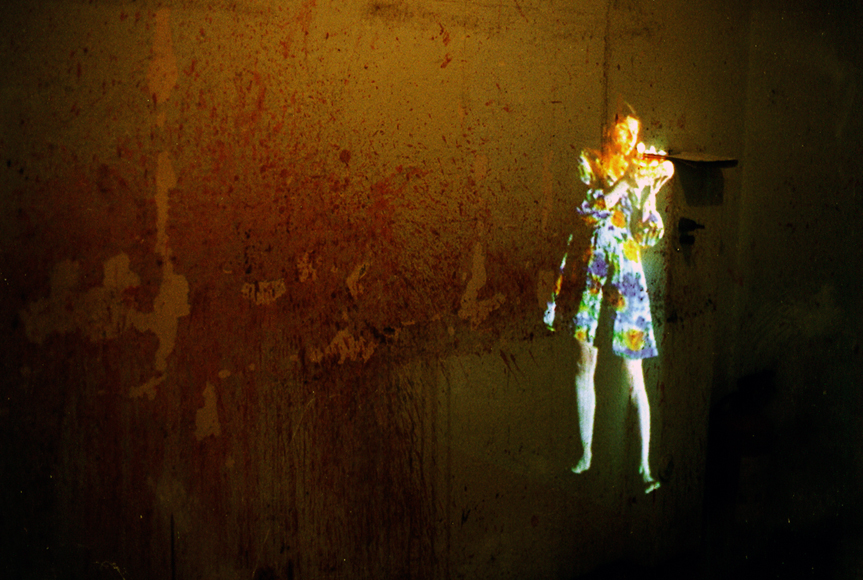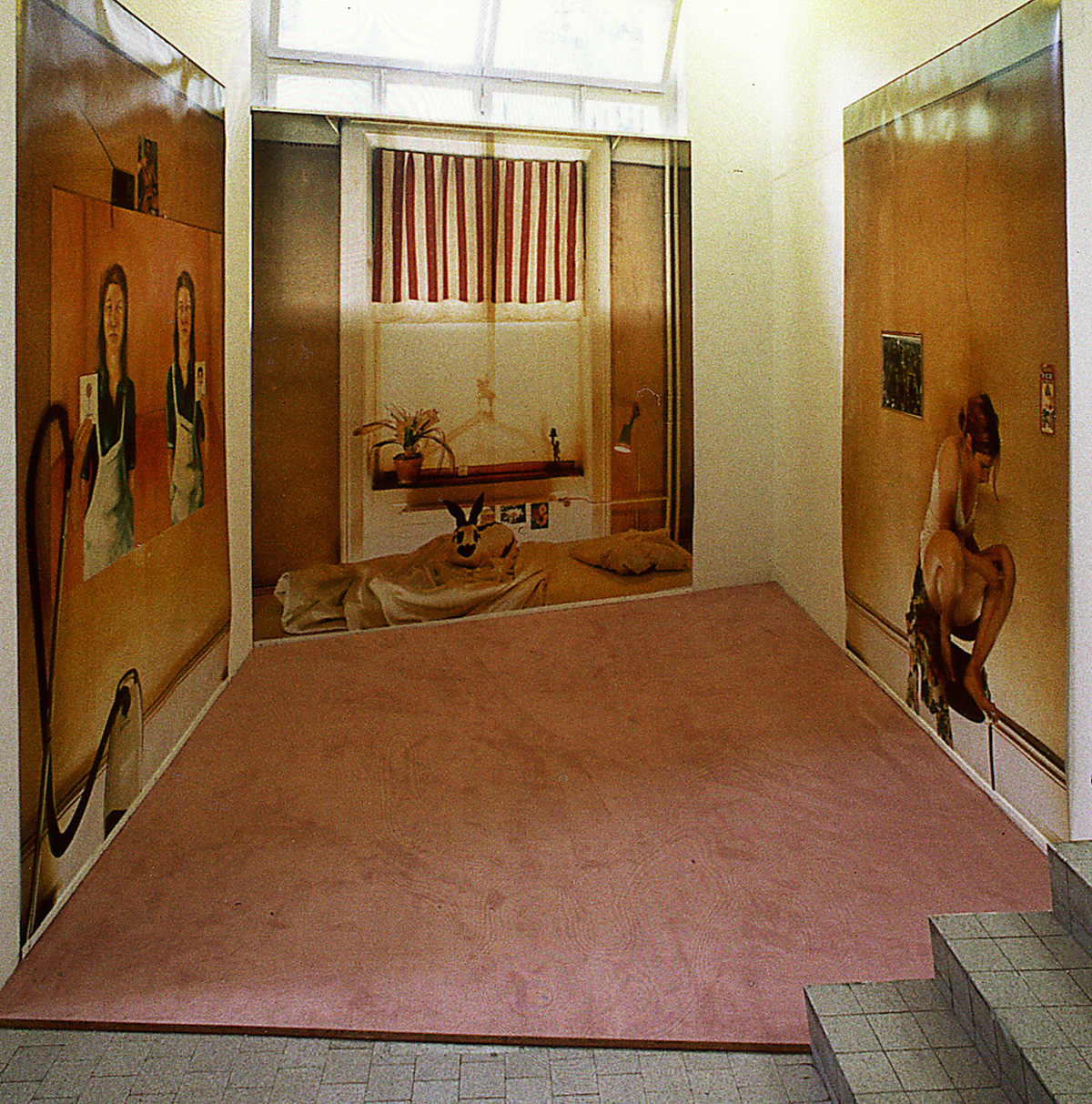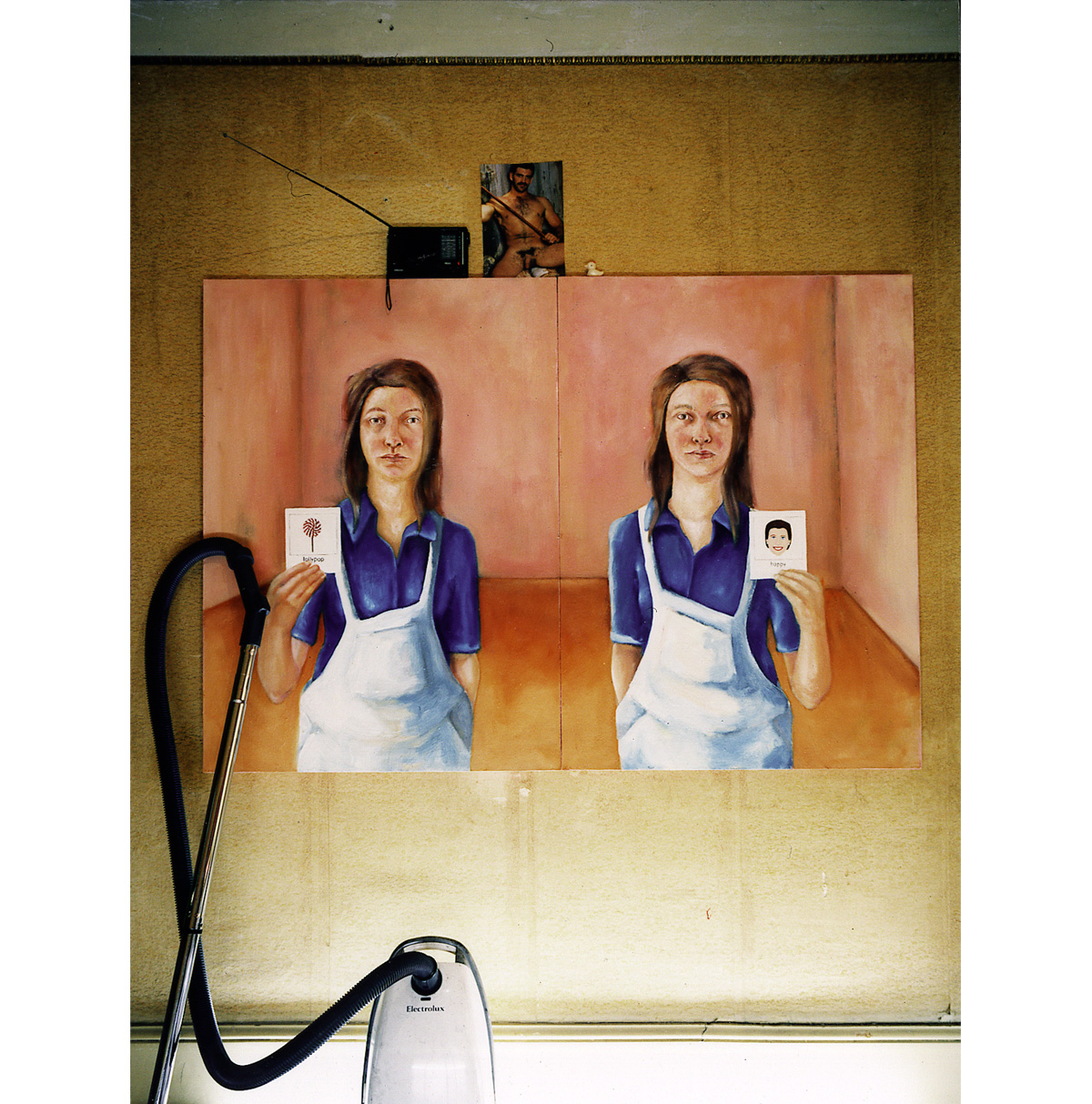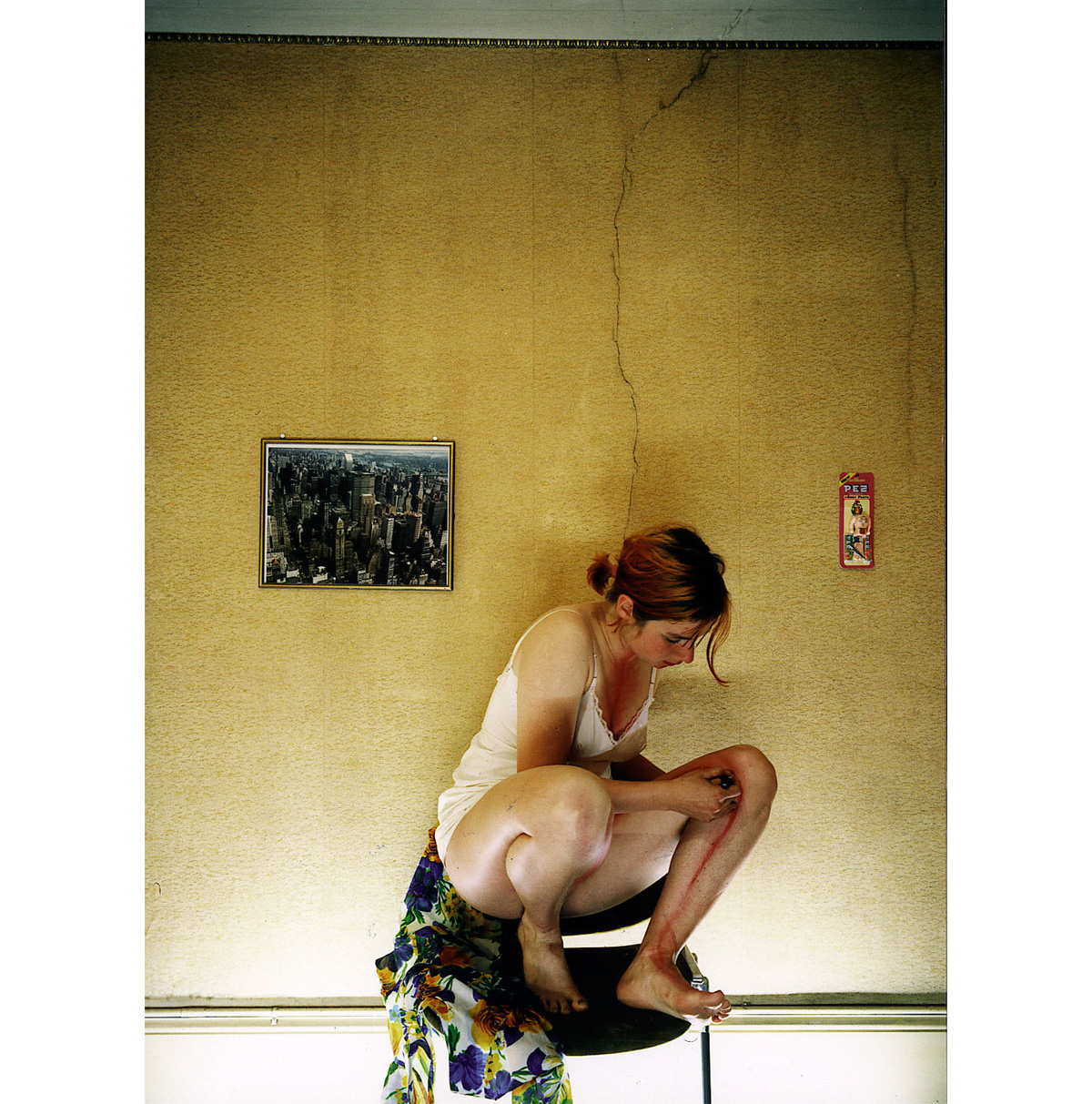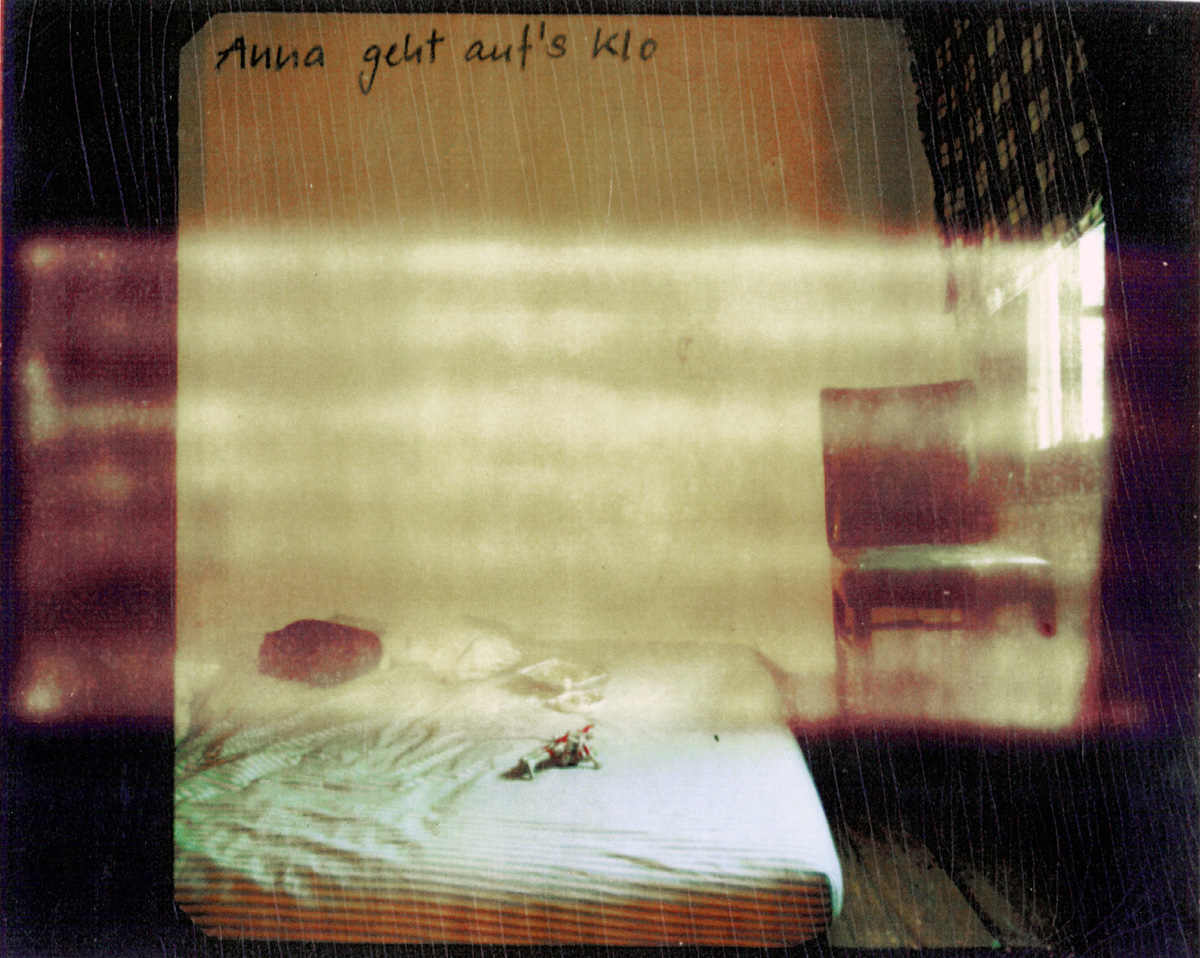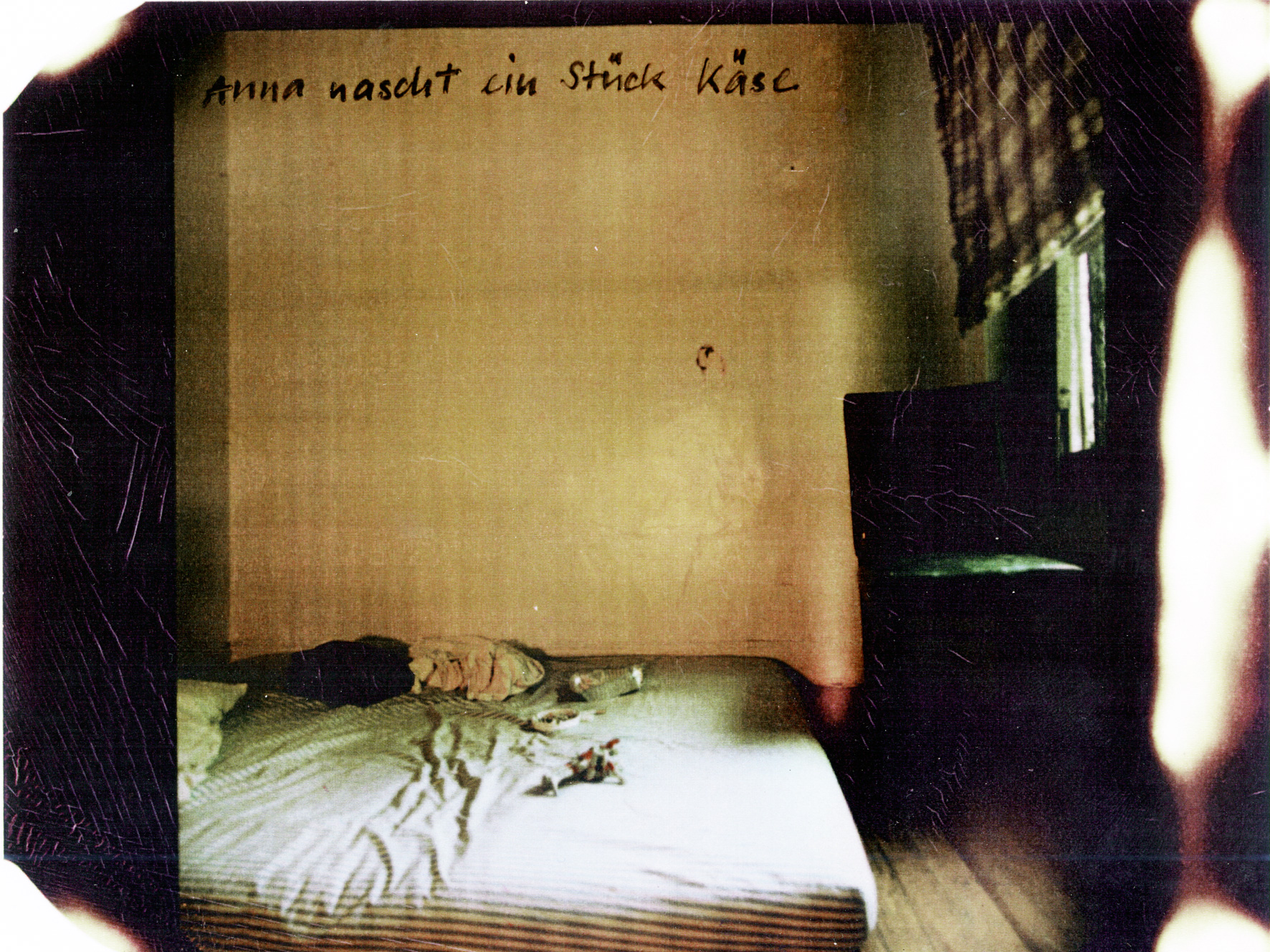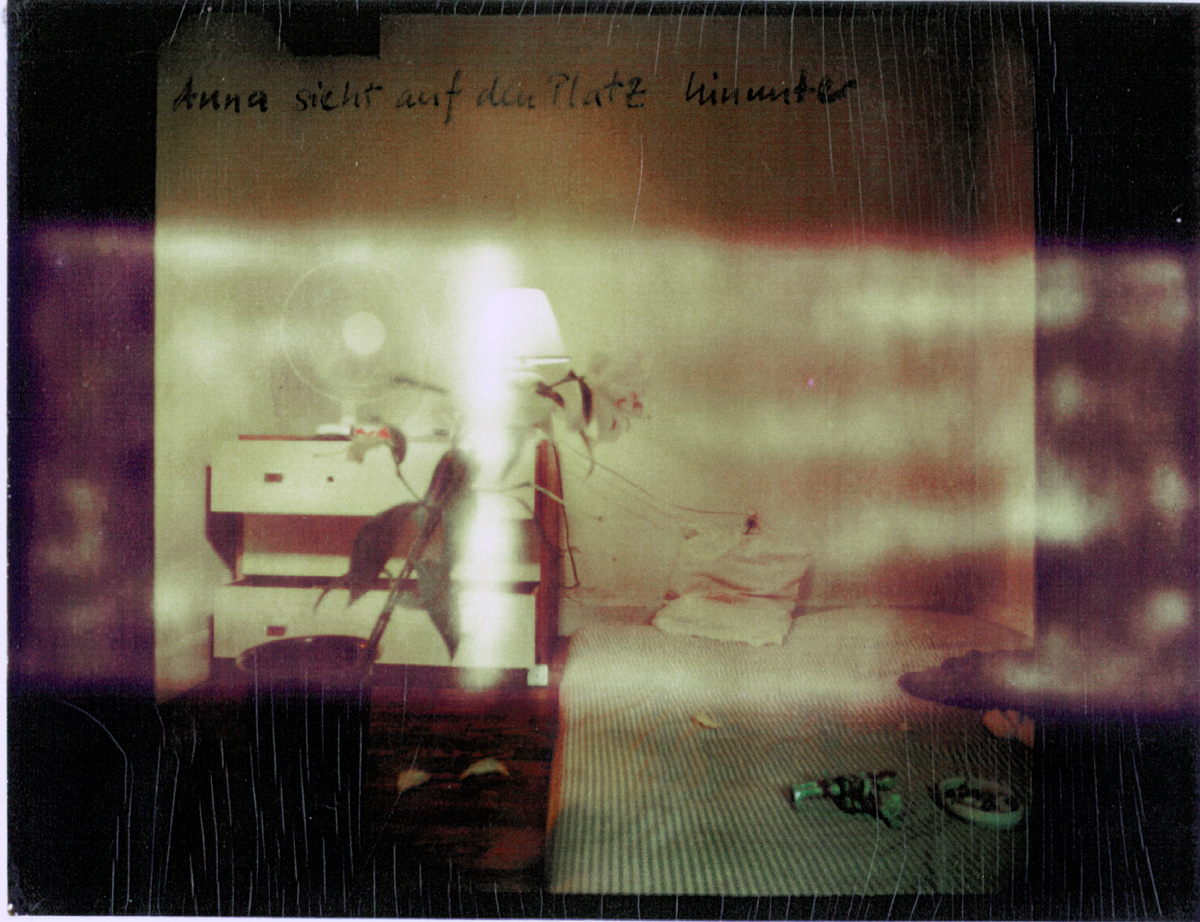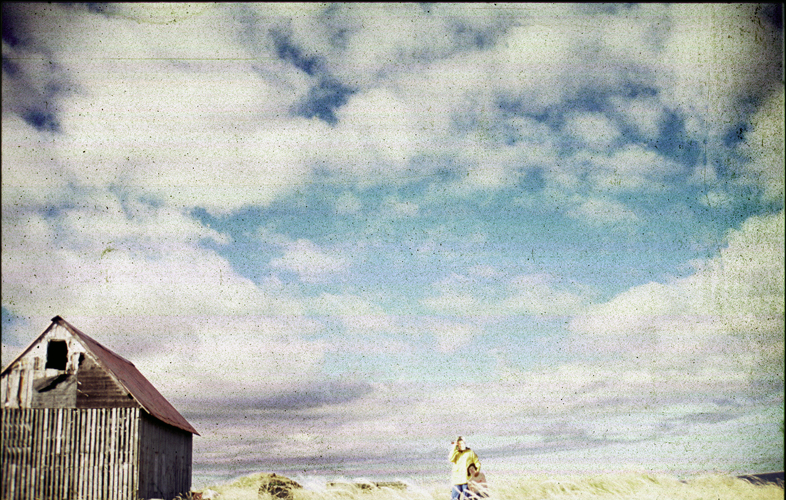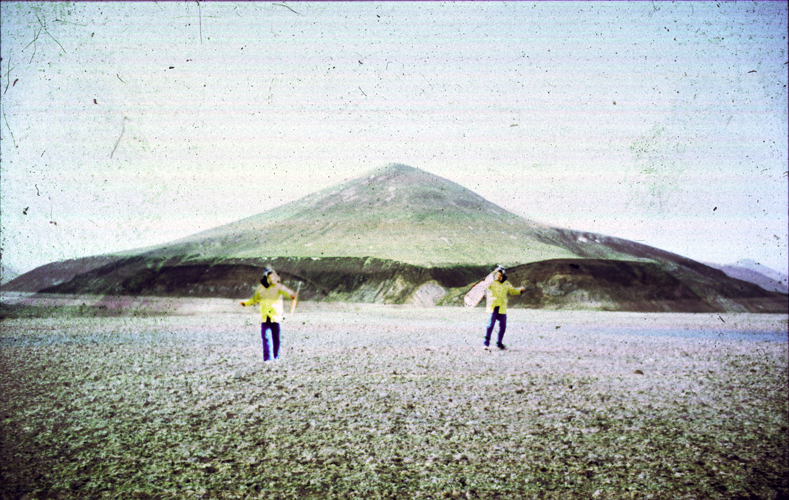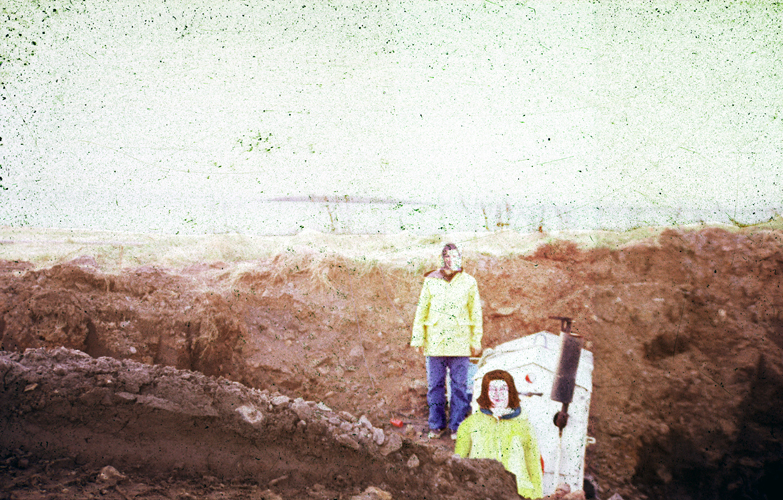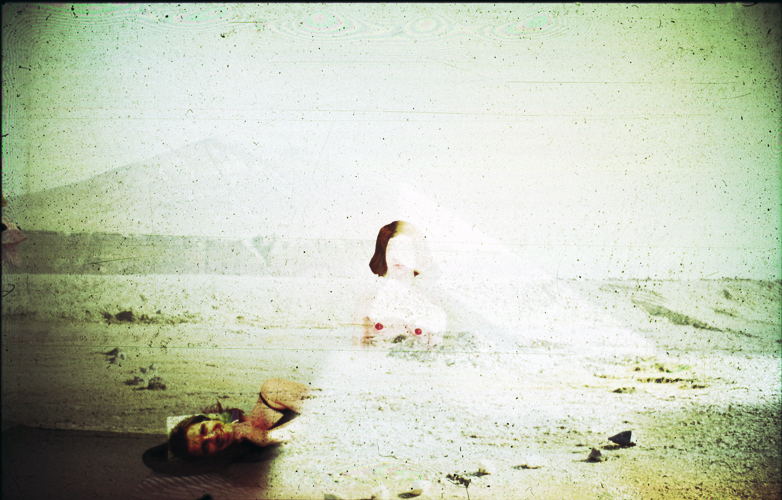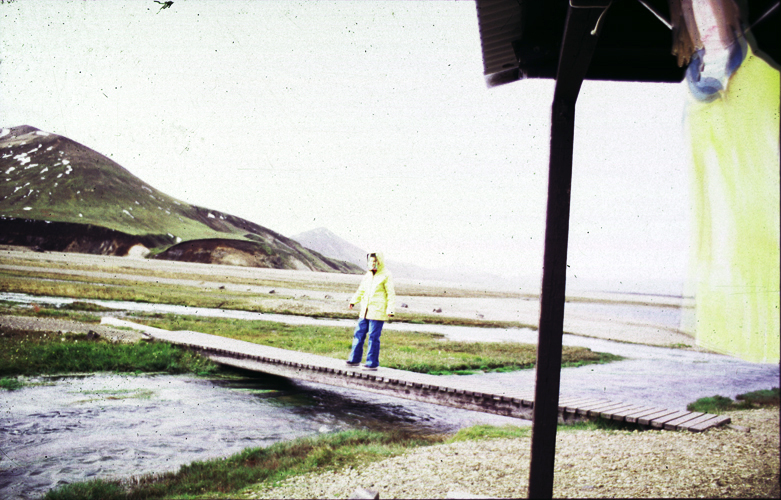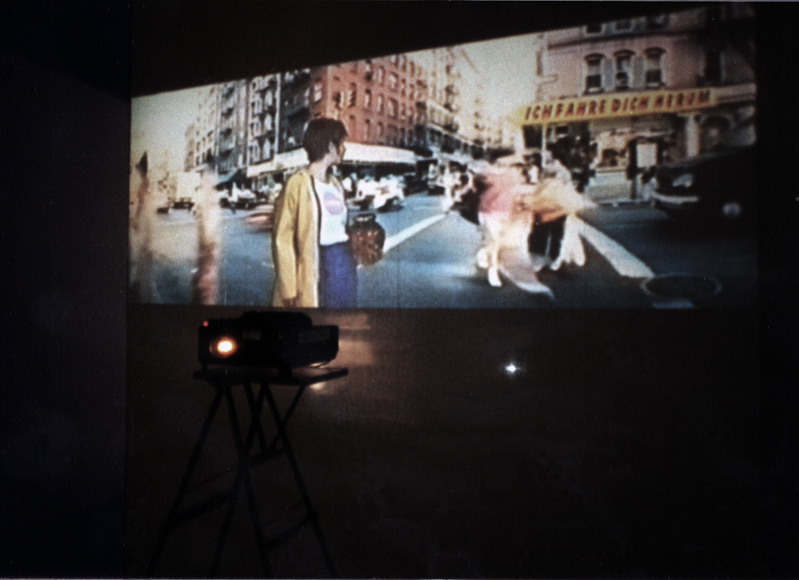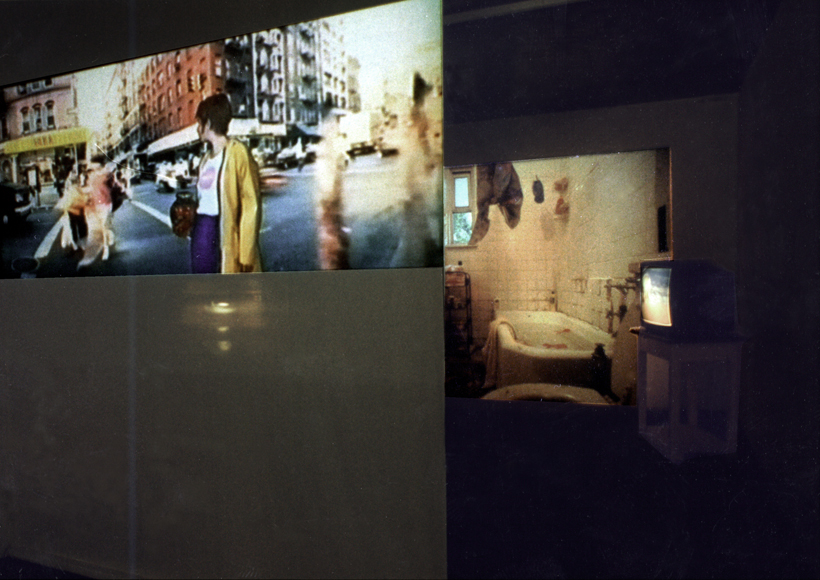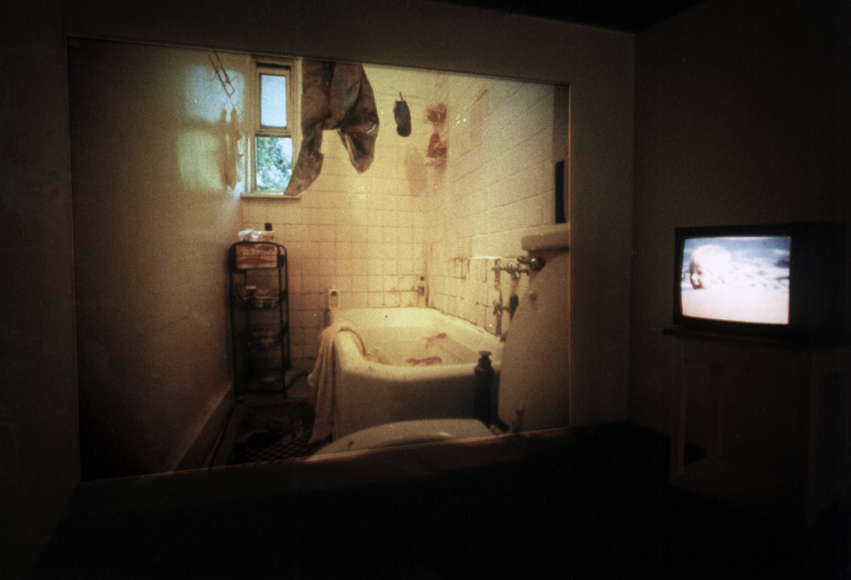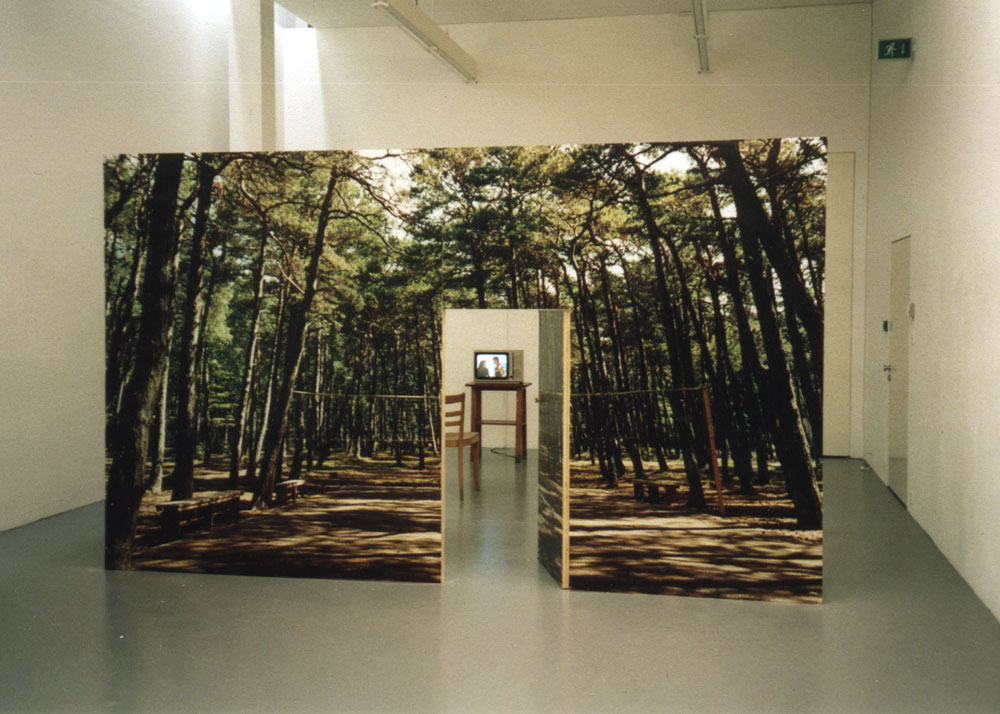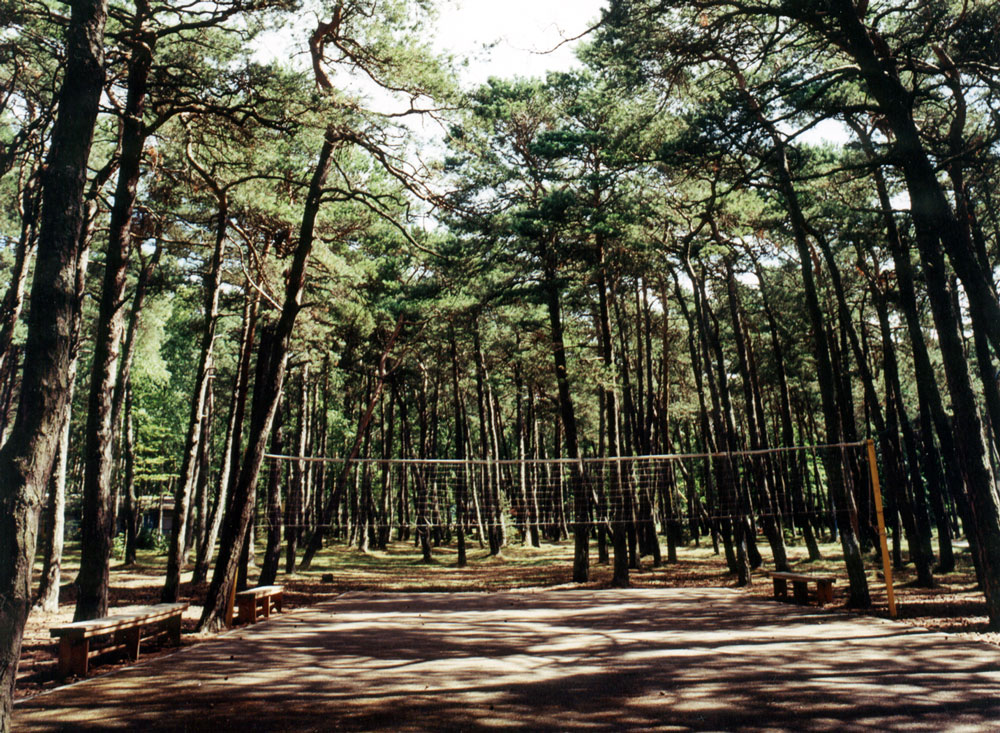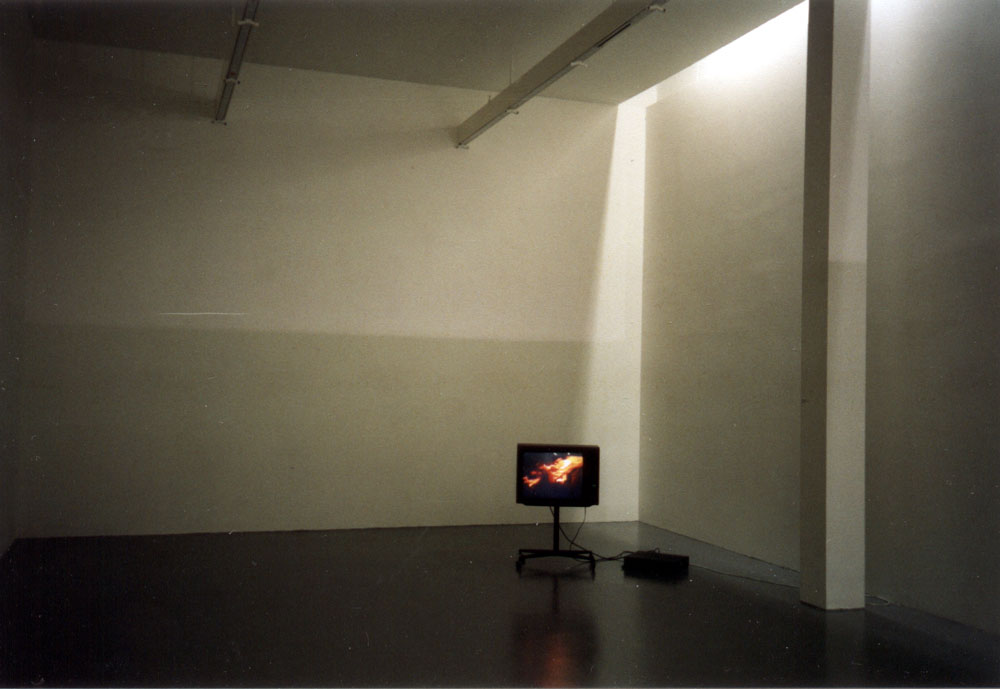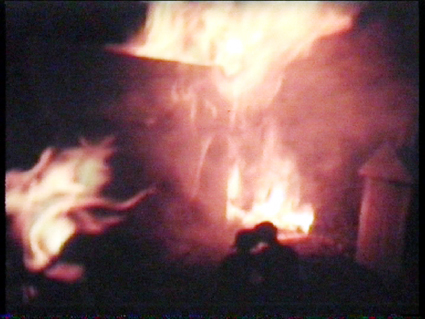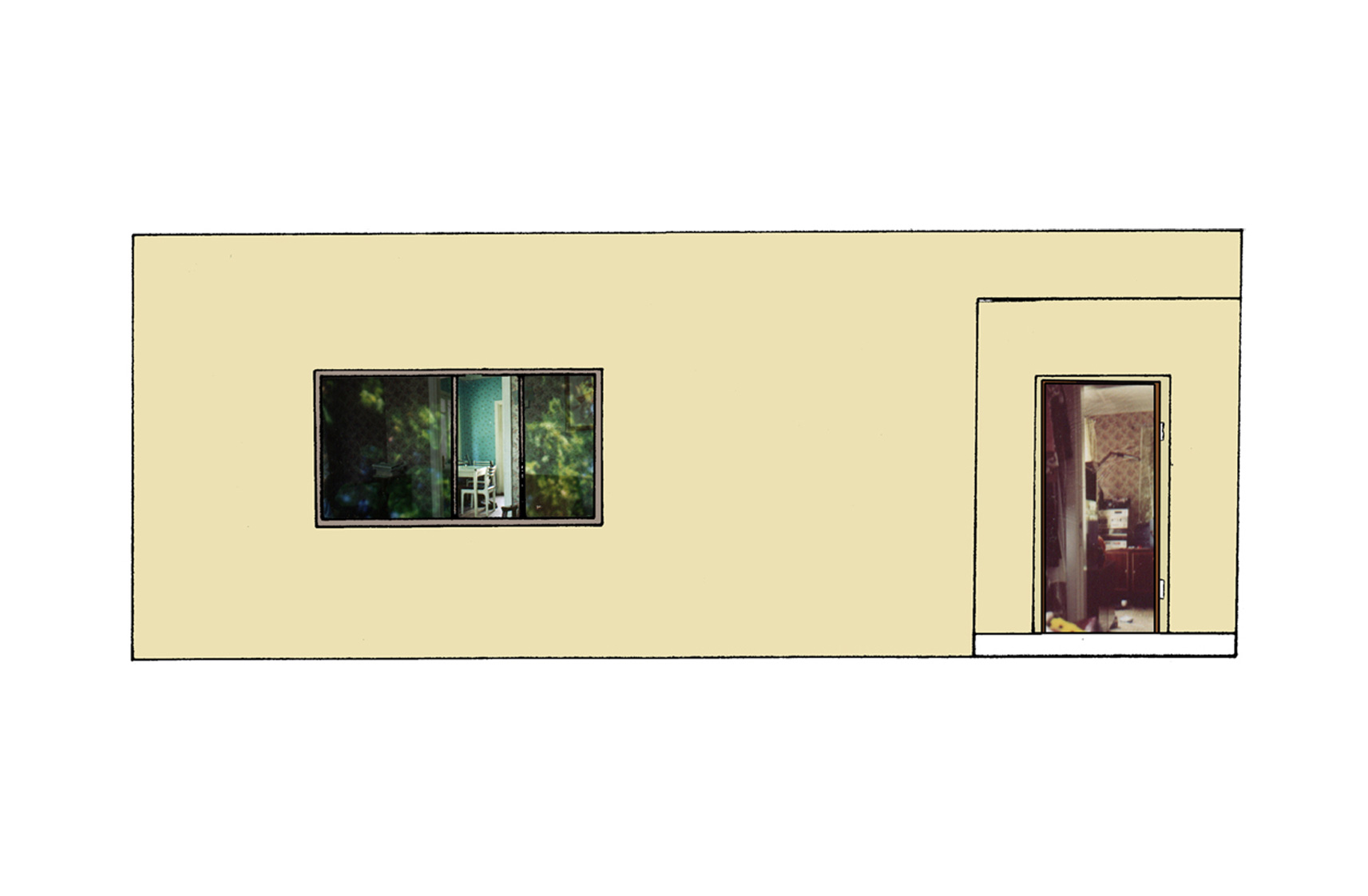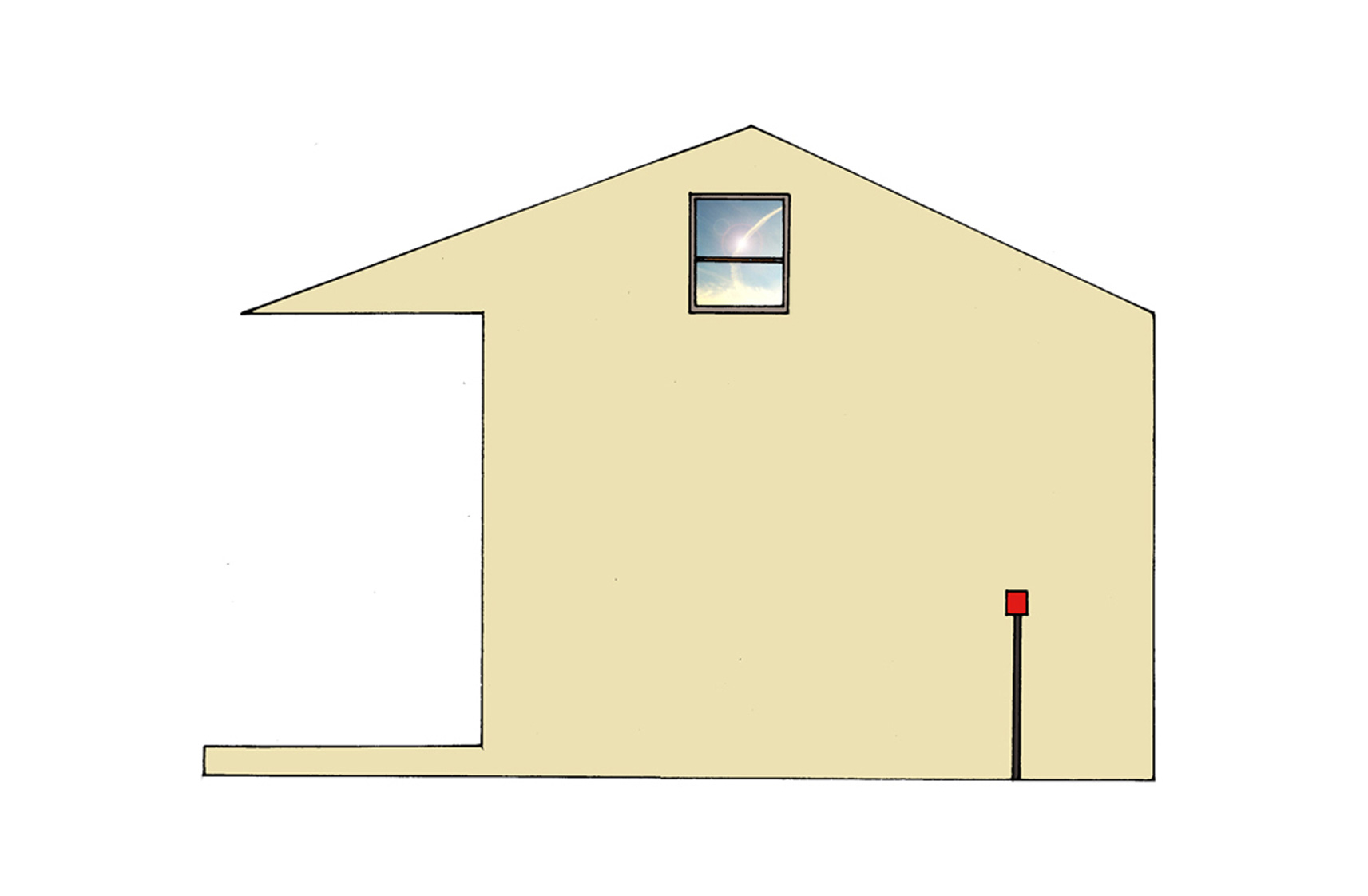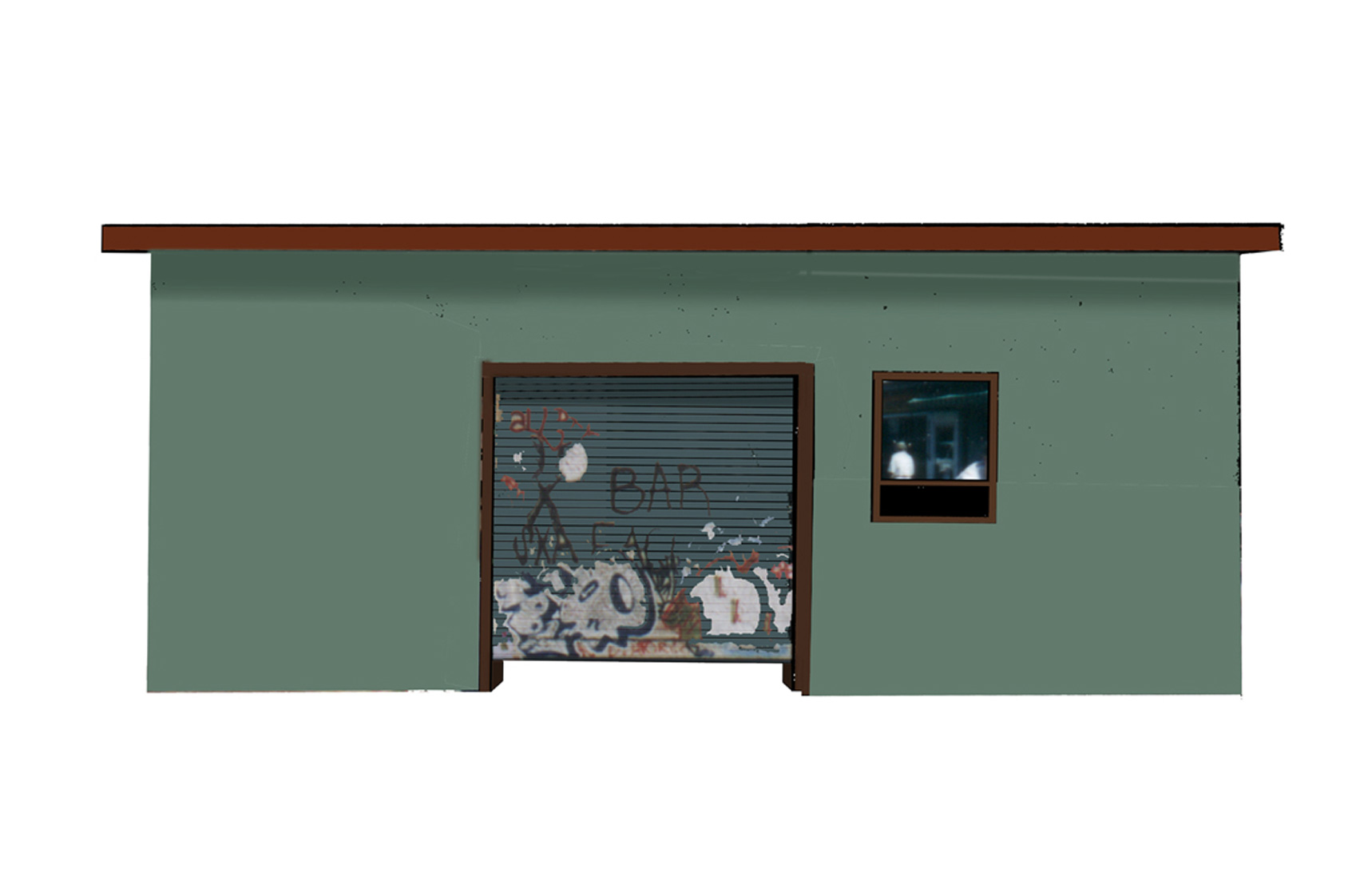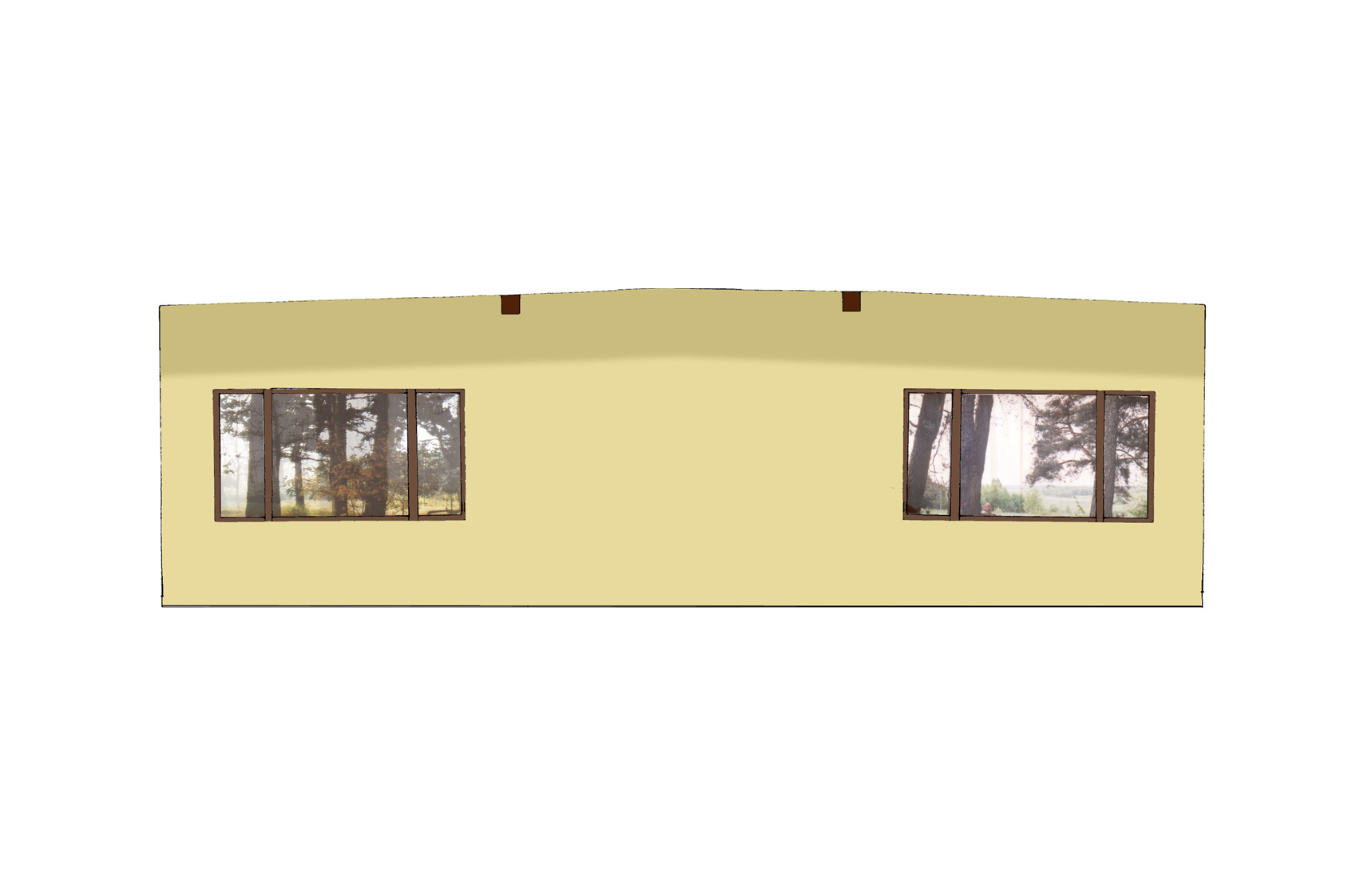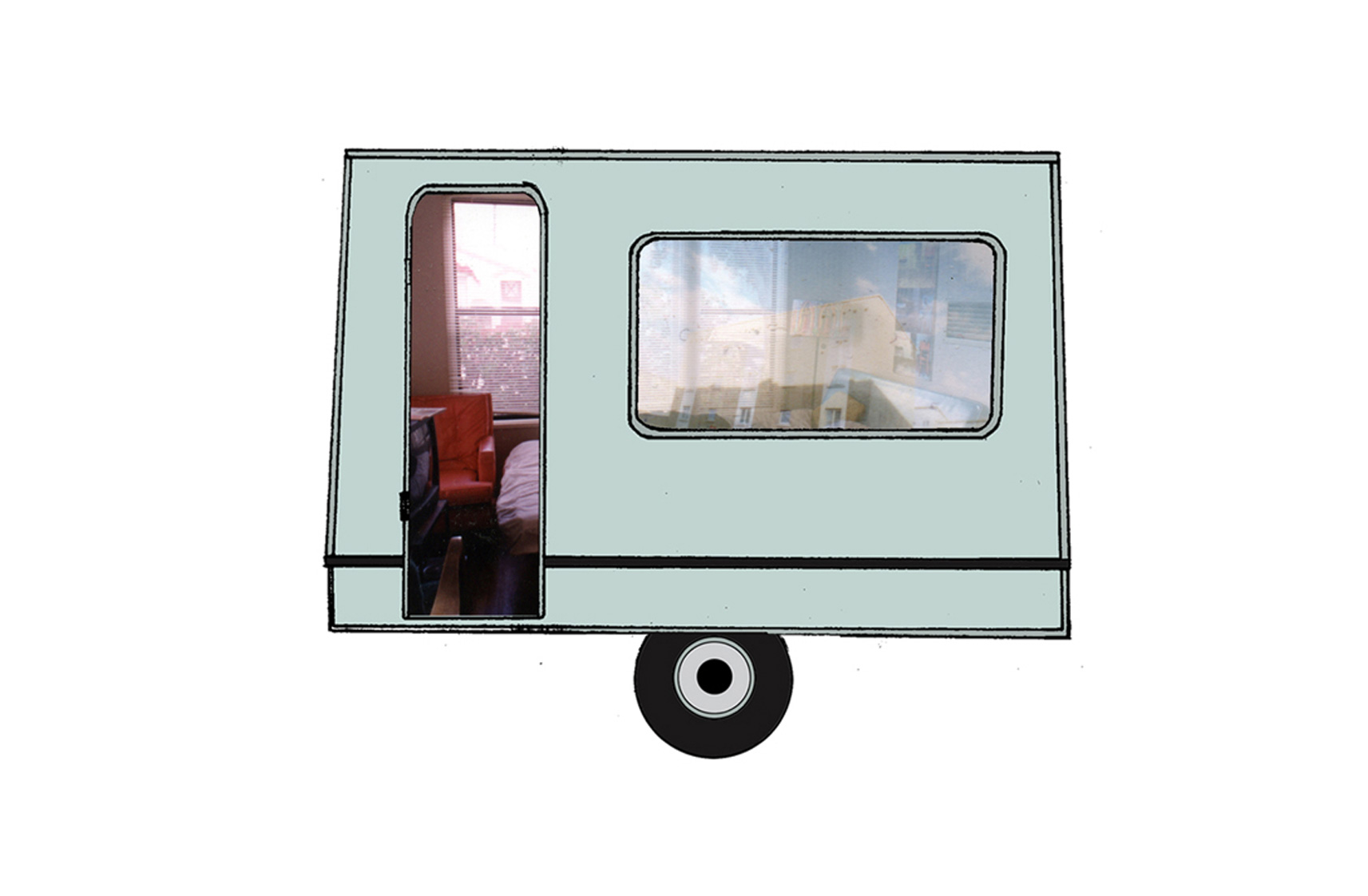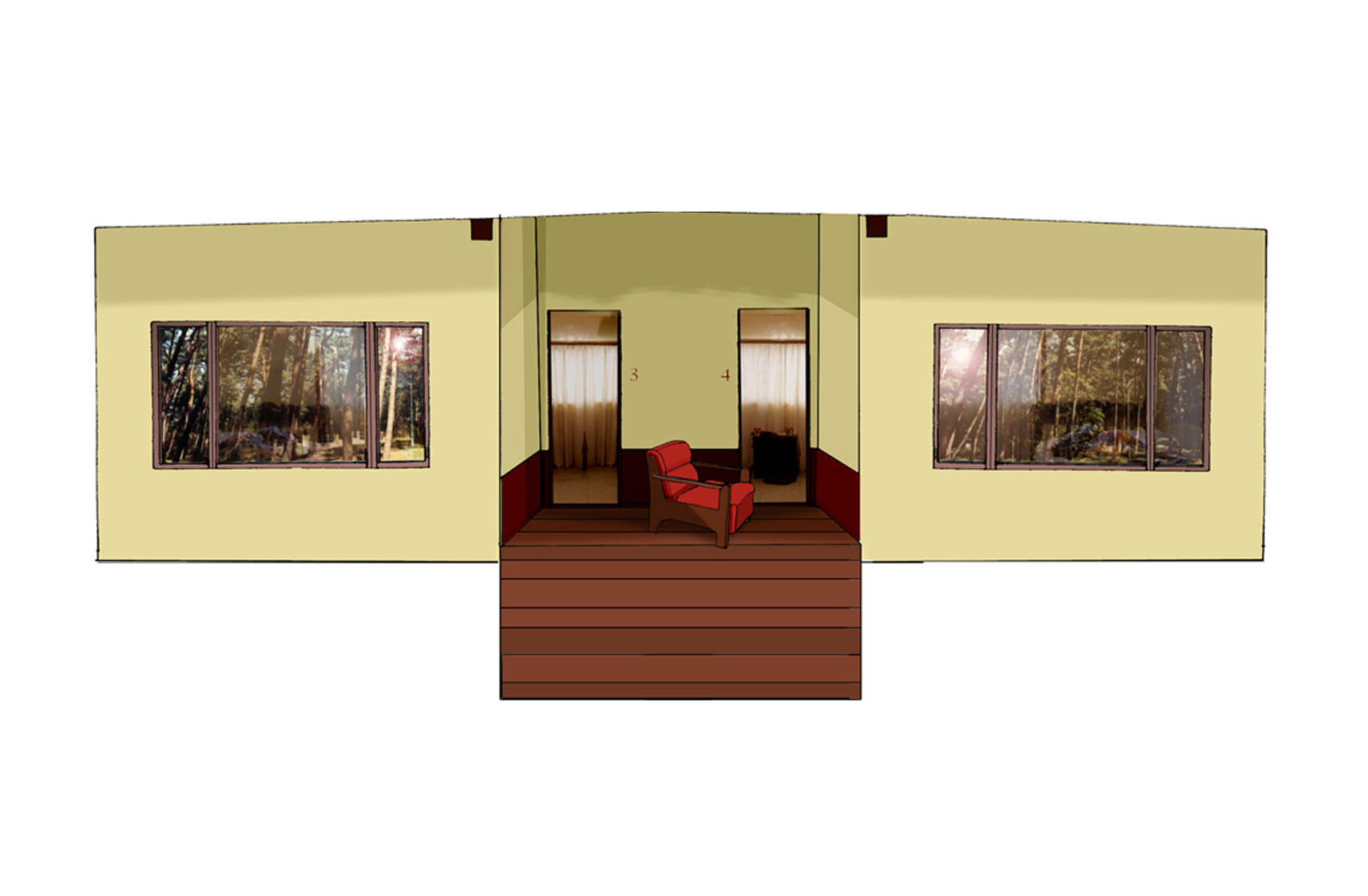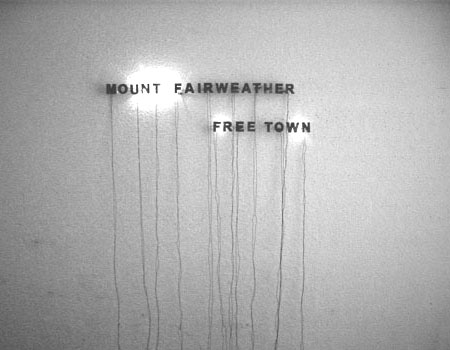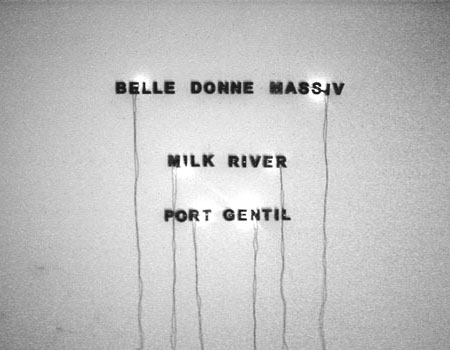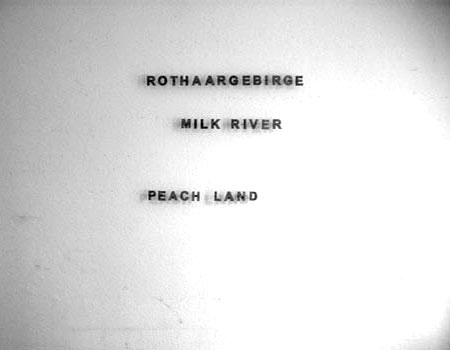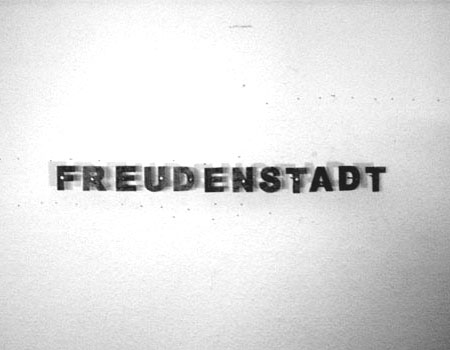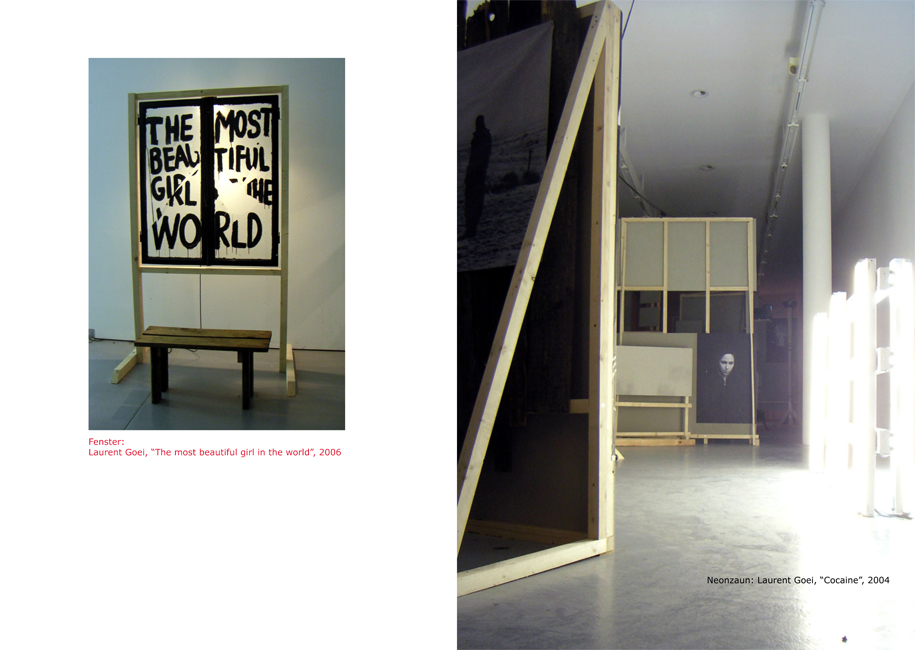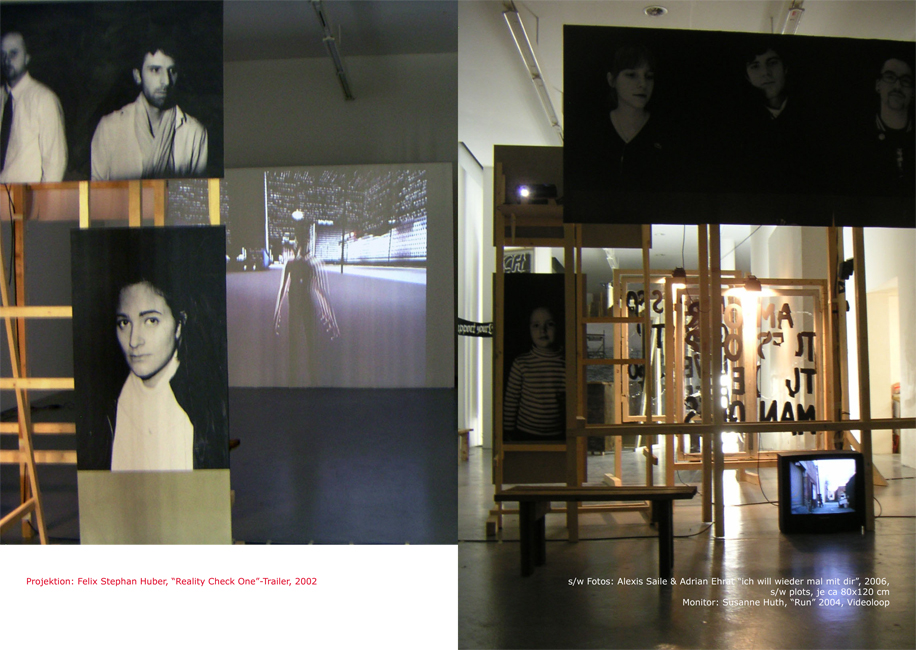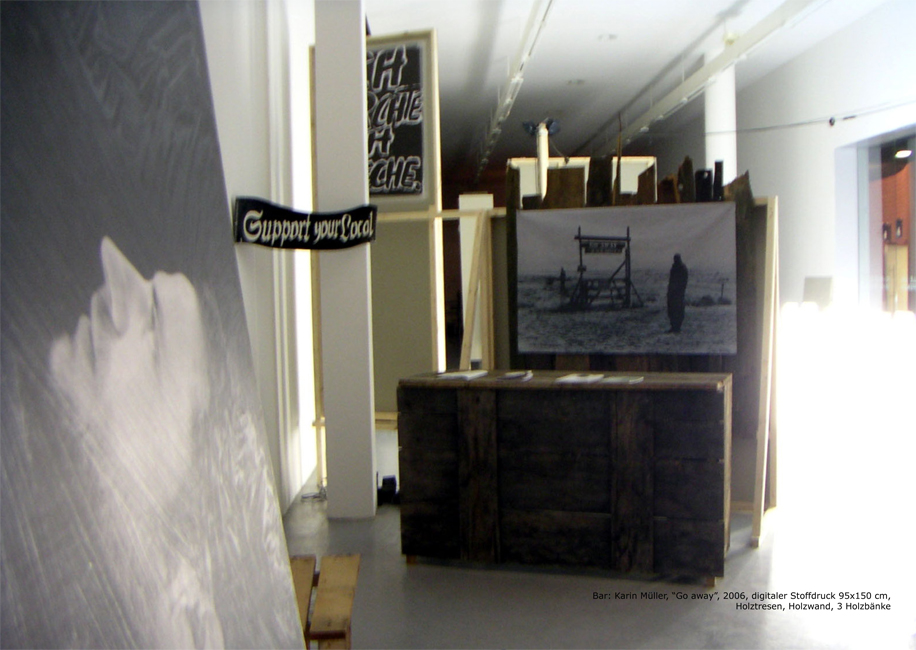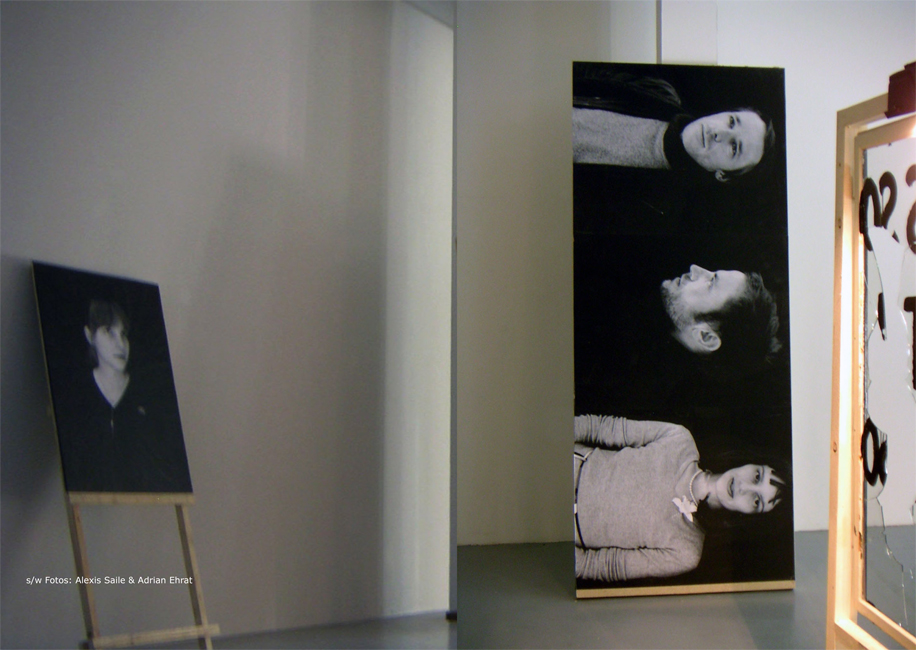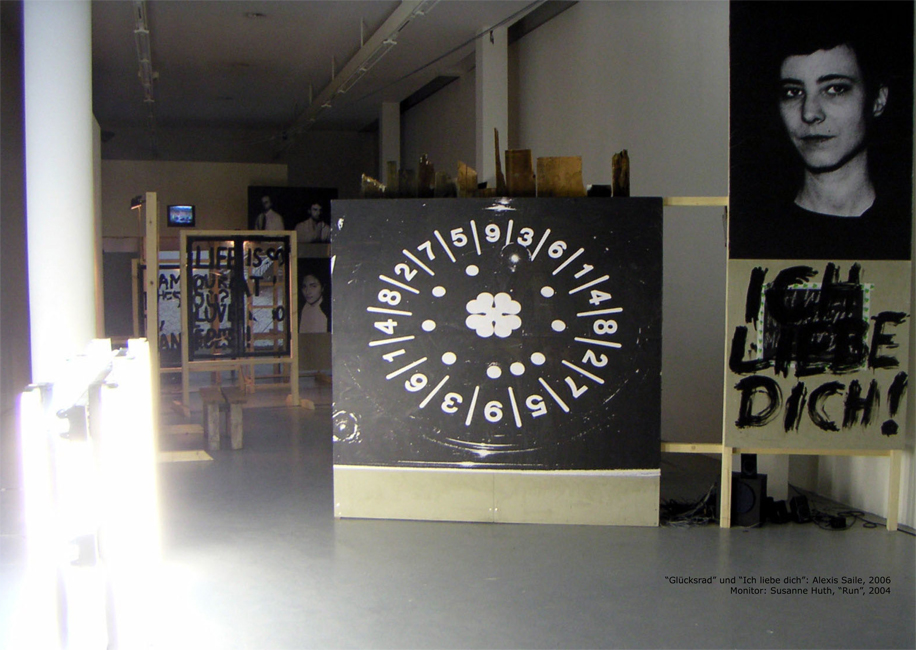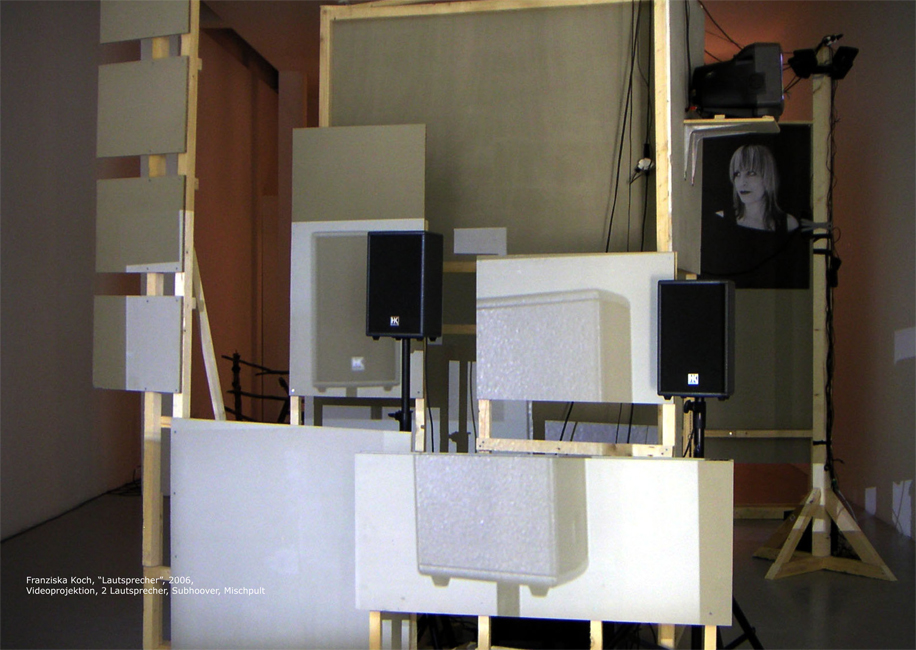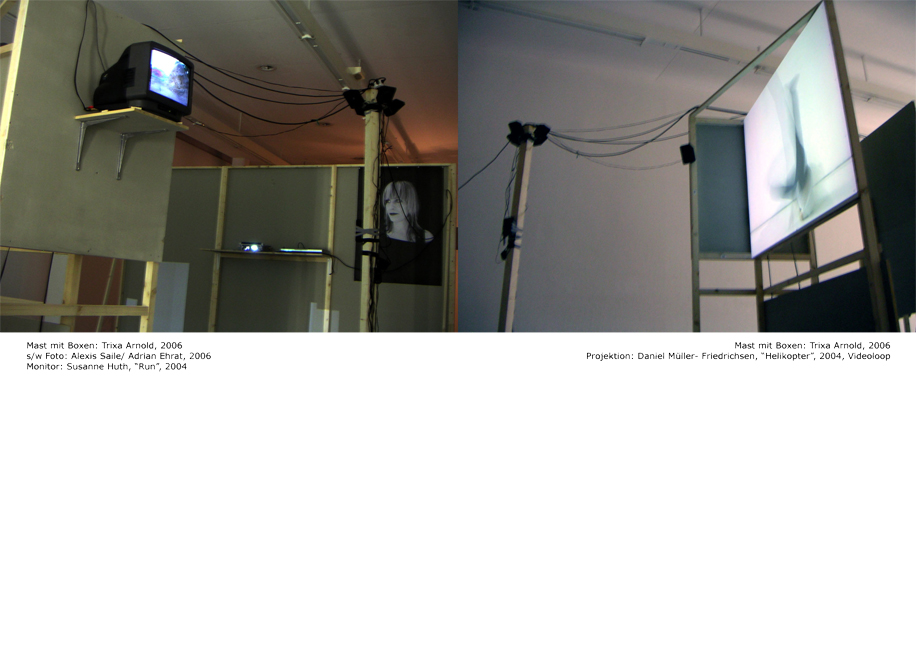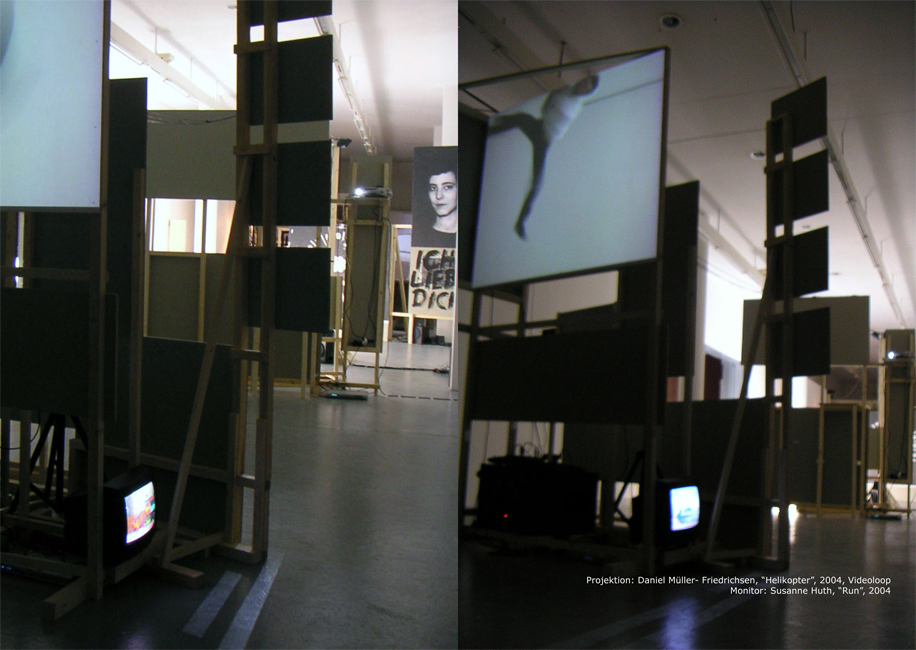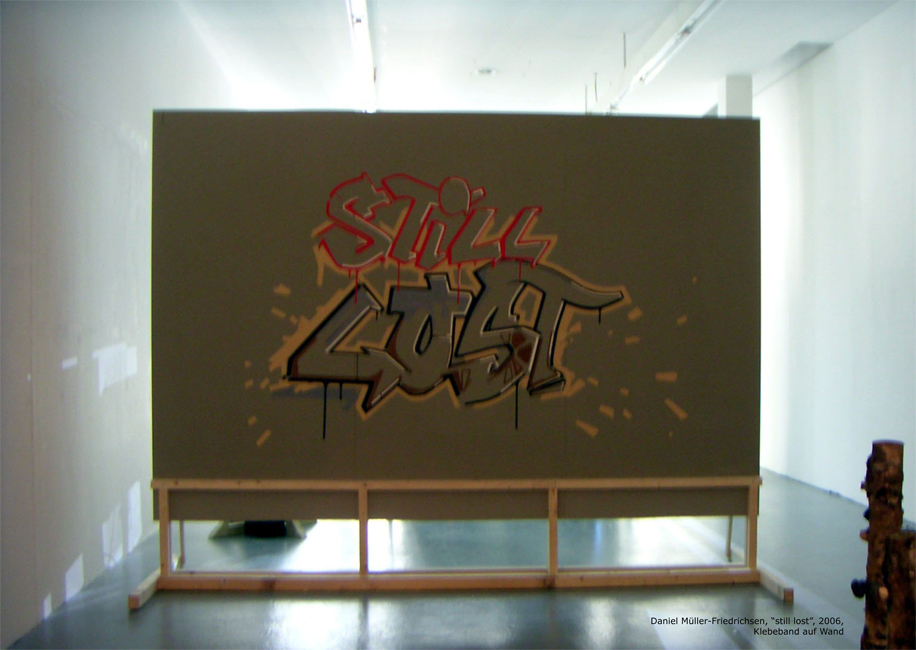
Nicole Henning was born in Essen, Germany. Today she lives in Zurich.
She completed her Bachelor in Fine Arts at the Lucerne School of Art and Design (HSLU) and a Master in Transdisciplinarity at the Zurich University of the Arts (ZHdK).
In addition to her work as a visual artist, she works on a project basis as a stage and costume designer for theater productions.
Since 2018 she has been heading the artist in residence Gastatelier Gleis 70 in Zürich.
Content
My works revolve around basic questions of the individual in relation to its place in the today’s world. In the current paintings this world is a kind of colorful, surreal playground.
For many years I have also worked as a stage designer for the theater. The stage as a setting for enactment and negotiation is also a central element of my artistic reflections. In earlier works, my stages took place in private rooms, model landscapes, or dollhouses. Anna, my protagonist, was either absent or present, and the stage design and the mise-en-scène reflected her unsubstantiated realities.
While my stages then were primarily interior spaces, today they are composed of various elements of the outside world. My library consists mainly of the Internet and my own photo archive. In it, I search for fragments of diverse realities and levels of reality, for example fragments from the world of consumption or the leisure industry, and arrange them into backdrops.
These backdrops constitute the spaces of what are currently mostly „painterly“ enactments, dramas, games.
Here various protagonists appear. They pose and sink at the same time in their motley pictorial environment and thus become part of the object world surrounding them. The mise en scène refers to facets of a modern world in which realities are simulated and world concepts are created for various purposes. I am interested in the role of the individual.
Artistic media
Painting as an artistic technique enables me to sketch realities in such a way that their immediacy, but also changeability, can be expressed: Traces of work, the impetus of the application of paint, the choice of colors reflect liveliness, violence, ambivalence.
The aesthetic reference to Pop Art, but also to the backdrop painting of the theater is relevant to me in terms of content. Based on this, painting gives me the opportunity to further intervene in what is actually depicted. So I use it as a kind of further actor to give the picture content through abstract painterly intervention an additional level of interpretation.
nano, Raum für Kunst, Zurich
|DAZWISCHEN|
2023, nano, Raum für Kunst, Zurich
Projekte _ Collaboration of Monika Rechsteiner (Video/Audio) and Nicole Henning (Paintings)
more informations on nano
Travel grant by the Otto Pfeifer Foundation: Research trip to France, August and September 2023.
Travel report (German only)
former Central Prison, LucerneIT'S NOT THE TIME FOR LIPSTICK
Gallery Urs MeileBLUE IS THE COLOR OF THE SKY
ACC Gallery WeimarEG HEITI ANNA
Living Art Museum, ReykjavikI DRIVE YOU AROUND IN A STAR'S CAR, ANNA
Gallery U.F.F, BudapestSANTA BARBARA
Gallery Urs MeileWINDLESS
Gallery Pro(s)Art, LucerneSURPRISE
Kunstpanorama, LucerneLONELY DAYS
Swiss Art AwardsBITA HOCHEE (THE HOUR OF THE ALLIGATOR)
Swiss Art AwardsSOUVENIRS
Regionale, Kunsthaus BasellandSZENARIO
Regionale, Kunsthaus BasellandCITY OF LONGING
Kunstpanorama, LucerneABOUT THE WRONG AND THE RIGHT PLACE
Fri-Art, extra muros, Fribourg
HAPPY BIRTHDAY
1998, video installation in a cell of the former Central Prison of Lucerne
The „Kunstzellen“ were created parallel to the theatre production MATTOMATTO by Friedrich Glauser. The play is based on a story that takes place in a psychiatric clinic.
the cell:
While the prison was still in operation, the prisoners made Christmas candles in this cell. The walls are splattered with red wax. When you enter the cell, you first think of blood, then you smell the smell of wax.
the installation:
If you stand in the cell door, all you see is the video beamer, which hangs like a surveillance camera in the upper left corner next to the window. Otherwise the cell is empty – apart from the splashes of wax and a woman’s voice quietly singing „Happy Birthday“. The projection can only be seen when you enter the room: in the corner next to the door a child-sized woman is dancing. She slowly turns around herself, swaying back and forth, holding a birthday cake with burning red candles in her hand. She sings the birthday song.

IT’S NOT THE TIME FOR LIPSTICK
1996, Gallery Urs Meile, Lucerne
Three colour photographs are installed on the walls, height: 240 cm.
A yellow light box with pink lettering hangs above the tilt window: „It’s not the time for lipstick“. The room is covered with a pink carpet.
City of Lucerne, Art Collection

BLUE IS THE COLOR OF THE SKY
1998, ACC Gallery Weimar
Mütter, ihr habt’s ja so gewollt , group exhibition. On three opposite walls hang three colour photographs. They show different views of the same room. Between them is a light box on the floor. It shows a singer (Anna) with a microphone in her hand. She seems to be singing. The title of her song: „Blue is the colour of the sky“.
Slides:

EG HEITI ANNA
1998, Installation at Living Art Museum Reykjavik, with Video Artist Guido Henseler
The slides show pictures from a discovery trip in Iceland. The protagonists are: Me myself, as a painted cardboard figure with a yellow raincoat, and Guido, represented by me, but with his portrait as a mask in front of my face and also dressed in a yellow raincoat.
The video of Guido runs on the monitor. He stayed in Lucerne and told me with a daily short recording what he experienced during my absence at home. His stories are addressed to me, but also to the Icelandic audience. That’s why he translates important parts like „I played football today“. Or „Can you buy kebabs in Reykjavik?“ with a dictionary.
Slides:
I DRIVE YOU AROUND IN A STAR’S CAR, ANNA
1998, Galleria U.F.F Budapest
Slide: Present, reality: A bathroom. The water in the bathtub is still let in – plastic fish swim in the tub with their stomach up. The window is open, Anna is no longer there.
Television: Past, memory, imaginary level. A looped moment of happiness:



A laughing child looks over the edge of a red rubber boat. The boat comes closer in slow motion and moves away again. This sequence of about 6 seconds is constantly repeated, creating an eternal rocking.
Sound level: „Washing up the moon“ by Knut and Silvy
A woman sings that she has stopped talking to the moon because it has never given her an answer to her questions. When the piece is finished, you can hear the tape being rewound. Then the song starts again.
video projection: future, imagination level
Anna stands at a crossroads in China Town. She is holding a glass with plastic fish in her hand and looks over her shoulder back at the neon sign of a shop. This is flashing at regular intervals: „I’ll drive you around“ – „In a star’s car“ – „Anna“ – „I’ll drive you around“ – … The outside space is just a photo of China Town, the neon sign a video animation. Anna stands in the bluebox.



SANTA BARBARA
1998, Gallery Urs Meile, Lucerne
Santa Barbara I, II, III – Dollhouse series
Cibachrome, each 150 cm x 100 cm
Santa Barbara II, City of Lucerne, Art Collection














WINDLESS
1999, Gallery Pro(s)Art, Lucerne
construction and destruction of a waffle fortress, video (53 minutes)
Anna is sitting in the garden. In front of her is a plate with chocolate waffles, a jug of water, two glasses. She waits, but nobody comes. A little bored she starts to play around with the waffles. She builds a wall, then a tower, then a second one, even higher. The glasses become buildings, the nibbled waffles become inhabitants. Flowers decorate the fortress – in front of it the enemies lie in raspberry jam blood.
The castle is finished. The artist smokes a cigarette and looks at her work. She eats some waffles, wipes crumbs off the table, eats some more. The moisture in the garden deforms the towers and they collapse one by one. Anna continues to eat waffles – eating her installation until she can’t eat any more. Then she wipes the rest into a trash bag. The two glasses and the jug remain. The tape rewinds. Anna starts building again.
SURPRISE
2000, Kunstpanorama Luzern
Group exhibition with Nils Nova and Markus Schwander.
Curated by Karin Frei and Susanne Wintsch.
Installation 1: Wonderland
Installation:
A scenery wall (400 x 240 cm) with the photograph of a playing field in the middle of the (Lithuanian) forest. A 150 cm high door leads through the middle of the playing field / wall. It leads into a room, similar to a living room. Flower drawings on the back of the scenery wall remind of an ancient wallpaper. Table, chair and TV as well as the American TV series „Baywatch“ (it was shown on Lithuanian TV at the end of the nineties) are references to a private living room and thus to familiarity.
Videoloop: An episode of the American series „Baywatch“.
Audio: Above the barely hearable original voices, a single narrator translates all dialogues into Lithuanian.

Installation 2: Home is where your heart is.
Installation: Television on roll rack
Videoloop: A house is on fire in a meadow. The flames change direction in the wind. Sometimes the scenery is brightly illuminated and two human figures leaning against each other become visible in the foreground. The aggressiveness of the fire is the central aspect of the work. The scenery is only recognizable in outlines.
Audio: a Russian pop song.

LONELY DAYS
2003, Swiss Art Award, Basel
The space of the installation had the size of 400 cm x 300 cm x 250 cm. The four walls were covered with A4 sheets of paper, each of which was only attached at its upper edge, so that the lower corners of the sheets gradually bulged upwards due to the moisture.
In the middle of the installation one stood between the houses of a small settlement that had been built as a model situation. This impression was created by the four photographs (to the north, west, south, east), which were taken in the middle of the model situation and then enlarged to the height of the room.
Slides of the original photographs on each side of the room:

A detailed view of the installation.

BITA HOCHEE (THE HOUR OF THE ALLIGATOR)
2002, Swiss Art Award, Basel
Room:
Room size 300 x 400 x 500 cm
Model houses 40 to 50 cm high
A small gathering of houses: a motel, a general store with a post office, a gas station and, a little aside, a caravan. A place for people in transit. It is night. Some houses have lights on. There’s a car at the gas station. The bonnet is open, it needs to be repaired.
Audio: Soft, happy dance music sounds from one of the motel’s houses.
Projection: At the „end“ of the settlement built on the floor a video loop is projected on the wall showing the same scenery as the one installed in the room.
Projection:
Videoloop: The same settlement as can be seen in the room. It’s early morning. The sun is shining and it’s clear that the road is a dead end. The car, which is still standing at the gas station in the nighttime room, is in the projection on the shore of the lake. Flames blaze under the roofs of the houses. Smoke wafts through the alleys.
Audio: room-filling sounds of fire and collapsing houses.
Some detailed views of the model houses:
SOUVENIRS
2004, Regionale, Kunsthaus Baselland
„Thunder Bay“ and „Wonder Lake“ were installed on two walls (approx. 200 cm x 240 cm and 300 cm x 240 cm) in Kunsthaus Baselland. The letters are made of cardboard and covered with a paper-wood imitation. They are pierced by a 6 cm long nail and stand at a distance of about 5 cm from the wall. Behind the letters, small light bulbs hang on their wires above the nails, which are used like rebars. The lights flash irregularly and remind of a somewhat shabby neon advertisement. The words are names of real places or regions on our globe.



SZENARIO
2011, Regionale, Kunsthaus Baselland
The installation is part of the group show Meubler la solitude, curated by Simon Baur.
Guache, oil on wood.
Priv ate collection
Szenario
Dawn / Dämmerung
The grove / das Wäldchen
The house / das Haus
Three palm trees / drei Palmen
CITY OF LONGING
17. Dez. 2006 – 06. Jan. 2007, Kunstpanorama Luzern
Conceived and curated by Nicole Henning & Karin Müller
with works by
Trixa Arnold
Adrian Ehrat/ Alexis Saile
Laurent Goei
Nicole Henning
Felix Stephan Huber
Susanne Huth
Franziska Koch
Karin Müller
Daniel Müller- Friedrichsen
and a concert of the „Duo Belvedere“in front of the video projection „Notte di Ballo“ by Marianne Halter

Slides:
Project Idea:
Städte sind Ausgangspunkte und Projektionsflächen von Sehnsüchten und Hoffnungen. Rom, Metropolis und Utopia sind nur drei Beispiele von ganz unterschiedlichen Entwürfen gemeinschaftlichen Zusammenlebens.
Jenes Gemeinsame, auf das die unterschiedlichen Konzepte sich beziehen, findet einen seiner Bezugspunkte in der Sehnsucht nach Zugehörigkeit und Anerkennung des Individuums. Wie aber wird diesem Bedürfnis im Zeitalter der “global cities” Rechnung getragen?
Die “Stadt der Sehnsucht” ist eine von Karin Müller und Nicole Henning konzipierte und kuratierte Ausstellung, die das Gefühl von Heimat in einem globalen Sinn thematisiert. Die beiden Ausstellungsmacherinnen haben dafür eine Raumsituation geschaffen, welche die eingeladenen KünstlerInnen aufgefordert waren zu bespielen und als Projektionsfläche zu benutzen. Gleich einem Bühnenbild im Theater, stellt die durch architektonische Eingriffe im Ausstellungsraum entstandene “Stadt” einerseits Verortung der Handlung dar, andererseits ist sie Ausgangslage, um das Thema “Sehnsucht” neu zu beleuchten.
In der jeweils eigenen künstlerischen Arbeit der beiden Ausstellungsmacherinnen spielt das Thema Sehnsucht, wie die Frage nach Identität und Verortung in einer globalen Gesellschaft, in unterschiedlicher Weise eine wichtige Rolle. Ihre persönlichen Statements, deren Ansatz weniger intellektueller Natur ist, als dass er sich aus der eigenen emotionalen Erfahrungswelt nährt, stellen einen öffentlichen Kommentar zu den weltweiten Veränderungen dar, zum Erleben einer sich im Wandel befindlichen Umwelt.
Die Schaffung eines Nicht-Ortes als Ausstellungsraum ist der Versuch, zwei unterschiedliche Welten zu visualisieren und miteinander zu konfrontieren. Dabei soll möglichen und utopischen Handlungsstrategien eine Bühne geboten werden. Im Vordergrund soll das Herausstreichen der gemeinsamen Belange stehen, sowie die subversive Vorgehensweise mit der sich die Statements der eingeladenen KünstlerInnen des vorgegebenen Raumes bemächtigen.

ABOUT THE WRONG AND THE RIGHT PLACE
2005, FRI ART, CENTRE D’ART DE FRIBOURG, extra muros, Fribourg
Installation at route Neuve and an accompanying booklet with excerpts from conversations with people from Freiburg about the wrong and the right place.
Slides:
Die Frage am richtigen oder am falschen Ort zu sein, hatte ich 1999 das erste Mal Leuten in Litauen gestellt. Viele der Gespräche basierten auf den Erfahrungen unter dem Sowjetregime, der schwierigen ökonomischen Situation im Land und dem Wunsch stärker an Europa angebunden zu sein. Trotzdem waren die erzählten Erlebnisse sehr persönlich und – wahrscheinlich dadurch, dass Litauen über Generationen unter wechselnder Fremdherrschaft stand – die Verbundenheit mit dem eigenen Land, den Wurzeln, sehr stark. Die Antwort, ob man sich an einem Ort wohl fühlt oder nicht, hatte mit Familie, Freunden und der Möglichkeit einen Weg zu finden, seine Lebensentwürfe umzusetzen, zu tun.
Die Frage nach dem richtigen oder dem falschen Ort, stellt die Frage nach den menschlichen Grundbedürfnissen. Je nachdem wo und unter welchen politischen und wirtschaftlichen Verhältnissen wir leben, sind diese besser oder schlechter abgedeckt. Der Wunsch nach Zugehörigkeit, Sicherheit und dabei trotzdem die Möglichkeit zu haben, seine Träume zu realisieren, war das zentrale Thema der Gespräche in Fribourg, genauso wie in Vilnius. Mit viel Poesie beschreiben die erzählten Geschichten einen (möglichen) persönlichen Frei-raum, der unabhängig bleibt von dem System, in dem jeder einzelne lebt. Die charmante Subversivität der Texte, die während den Gesprächen entstanden, war für mich der Beweggrund, sie nicht in einer Galerie oder an Plakatwänden zu zeigen, sondern gleich den Graffitis, an Häuserwände in der Stadt zu schreiben. Hier in Fribourg stehen zwei Statements und zwar an dem Haus in der Route Neuve Nr. 4, das in Anbetracht der es umgebenden Architektur, auch nicht wirklich an seinem Platz zu sein scheint. Es soll denn auch in diesem Herbst abgerissen werden.
Herzlichen Dank an: Stephanie Gayte, Thomas Schüler, Daniel Salzmann, René Bosshard, Anne Zürcher, Markus Betschart, Georges Wyrsch, Olivier Aebischer, Birgit Perroulaz, Muriel Constantin, Tanja Lottaz und die hier namentlich nicht erwähnten, für ihre Mitarbeit! Herzlichen Dank auch an Sarah Zürcher und die FRI-ART Crew, Isabelle Krieg, Beat Brogle und an alle anderen, die zur Umsetzung beigetragen haben und natürlich Jonathan Kemp, für die vergnügliche Zeit auf dem Gerüst!
Fri Art, 2005

